How to Maintain Your Car to Keep It Running Well
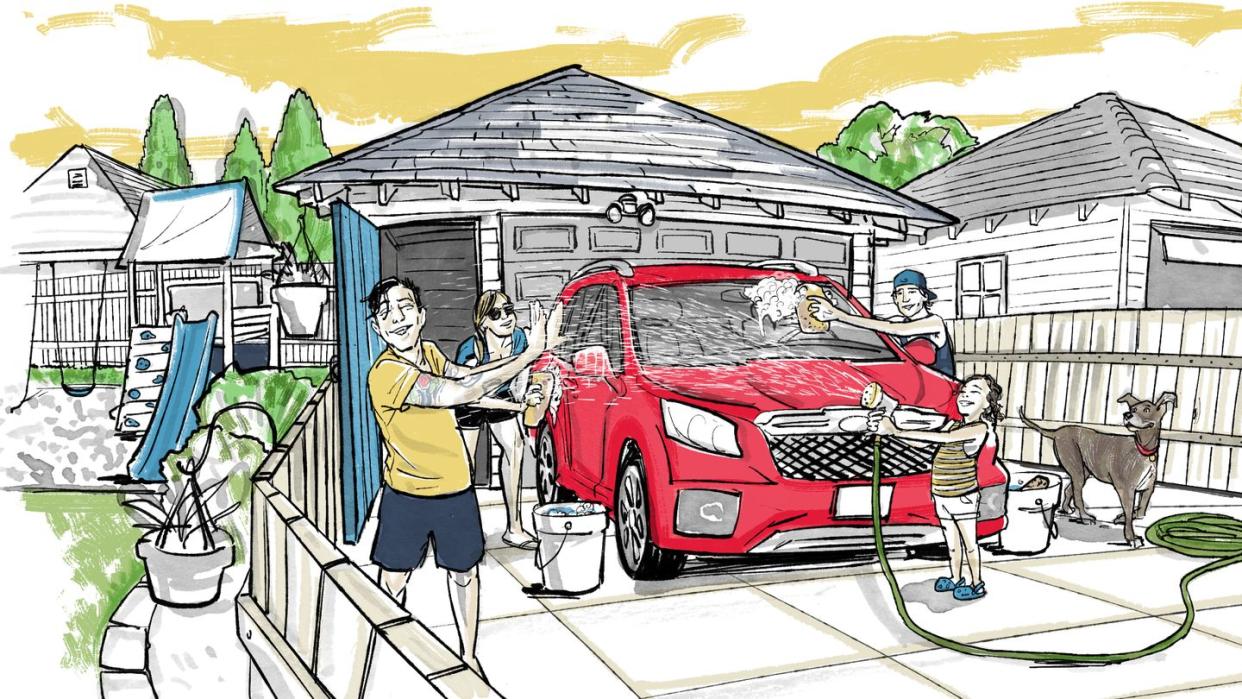
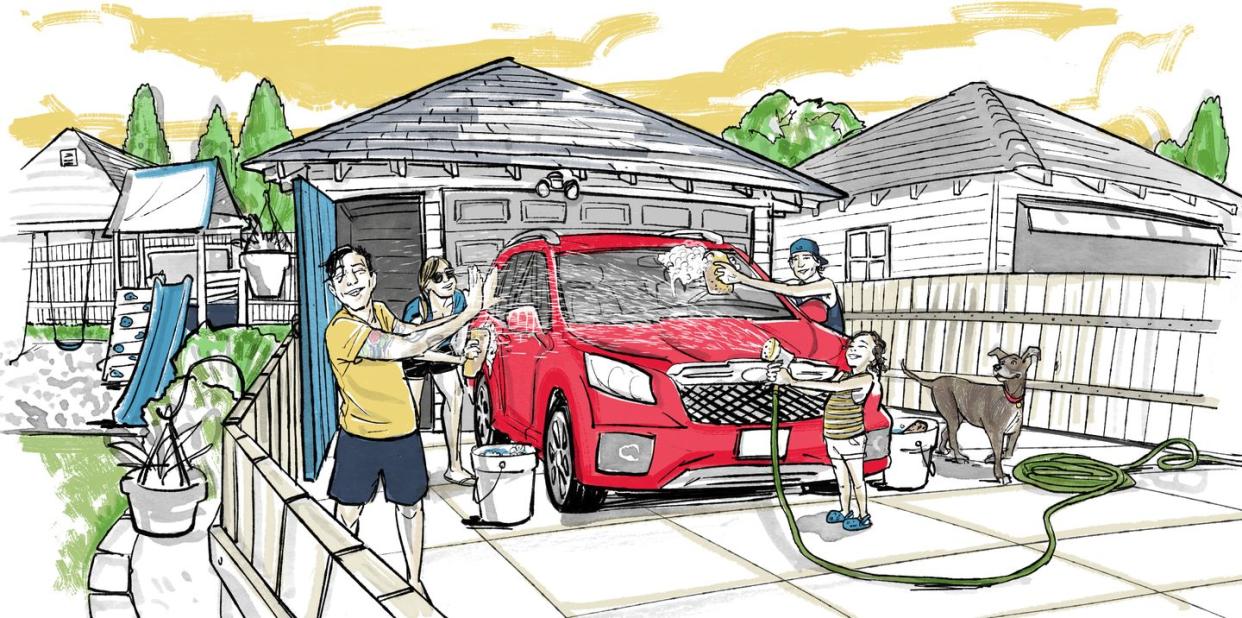
Whether you bought a new or used vehicle, and whether it's your first or your fiftieth car, it's good to consider how to properly care for it to keep your car on the road for the years to come. Modern cars are complex machines, and they require regular maintenance and care to remain safe and reliable. Parts wear out, things get dirty, oil needs changing, and if you're unfamiliar with when and how to perform maintenance, you can end up costing yourself more in the long run with unexpected repairs due to your own neglect.
Lucky for you, Car and Driver's editors have been monkeying around in garages and fussing with dealership service advisors since 1955. Here's a step-by-step guide to the basic auto maintenance questions we get asked the most, which will help even first-time car owners keep their cars ticking like well-oiled machines.
Maintaining Your Tires
Perhaps the most important safety feature of a car, regardless of its age, is its tires. Ideally, what you need is a matching set of tires with generous tread and a climate rating that's appropriate for driving conditions in your area. With worn tires, something as simple as a summer rain can turn roads into a hazard, so here's how to make sure that every time you drive you've got the grip you need.
How often to change your tires/how to know when you need new tires
Generally, a set of tires should last between three and six years and up to 80,000 miles, but it varies widely based on how you drive, how many miles you put on a year, and what type of vehicle you have. The best practice here is to regularly check each tire and look for evidence of excessive wear, balding, or bulges in the sidewall. If you notice any of those items, make it a priority to buy a replacement set.
Tires come with tread-wear indicators, but there's a fun old-fashioned way to tell if your tires are too worn out. Take a penny, flip it upside down, and put Lincoln's head between the treads. If his head is partially obscured, you should be good to go.
How often you should rotate your tires
Most auto manufacturers will have a specific recommendation in your car's owner's manual for how often tires should be rotated. This could be once a year, once every 10,000 miles, or at some other specific interval. You can deviate from these guidances, but it's recommended that if you decide to rotate on your own schedule, keep it regular so that the tires wear as evenly as possible. Note that not all cars require tire rotation. Some—usually performance vehicles—employ different-sized front and rear tires, which makes rotating these tires a big no-no. The good news is that so-equipped cars often have dynamic driving benefits. The bad news is that these vehicles' tires have a shorter lifespan due to the fact they're axle-specific.
How/Where you can add air to your tires
A tire is only as good as the air it's holding, so it's important to keep an eye on its pressure. Most new cars have sophisticated tire-pressure monitoring systems that will let you see in real time the air pressure of each tire.
Some have a less high-tech version where a warning light will illuminate when one or more tires are low, but leave the guesswork to you to figure out which one or ones need a good once-over. If you think you have a low tire, there's an easy way to check and it only requires a low-cost pressure gauge—a tool that's essential for every car's glovebox.
First, check the label inside the driver's side door jamb to see the manufacturer's recommended tire pressure for your car. It should list this in PSI (pounds per square inch). Next, remove the protective plastic cap from your tire's valve stem and press your pressure gauge down onto the metal tip. Your pressure gauge will display the tire's PSI reading. If it's lower than recommended, it's time to fill up.
We recommend carrying a portable air compressor in your trunk for just such an occasion. Our Gear Team even tested a bunch of them to figure out which ones are best. If you don't have one, there are public places you can go to air up, such as gas stations and tire shops.
But be very careful driving on a low or flat tire. In the latter case, it's recommended you don't drive it at all and instead call a tow truck. Public air compressors often only run when you put some quarters in, so it's a good idea to keep a couple of dollars in coins in your car just in case.
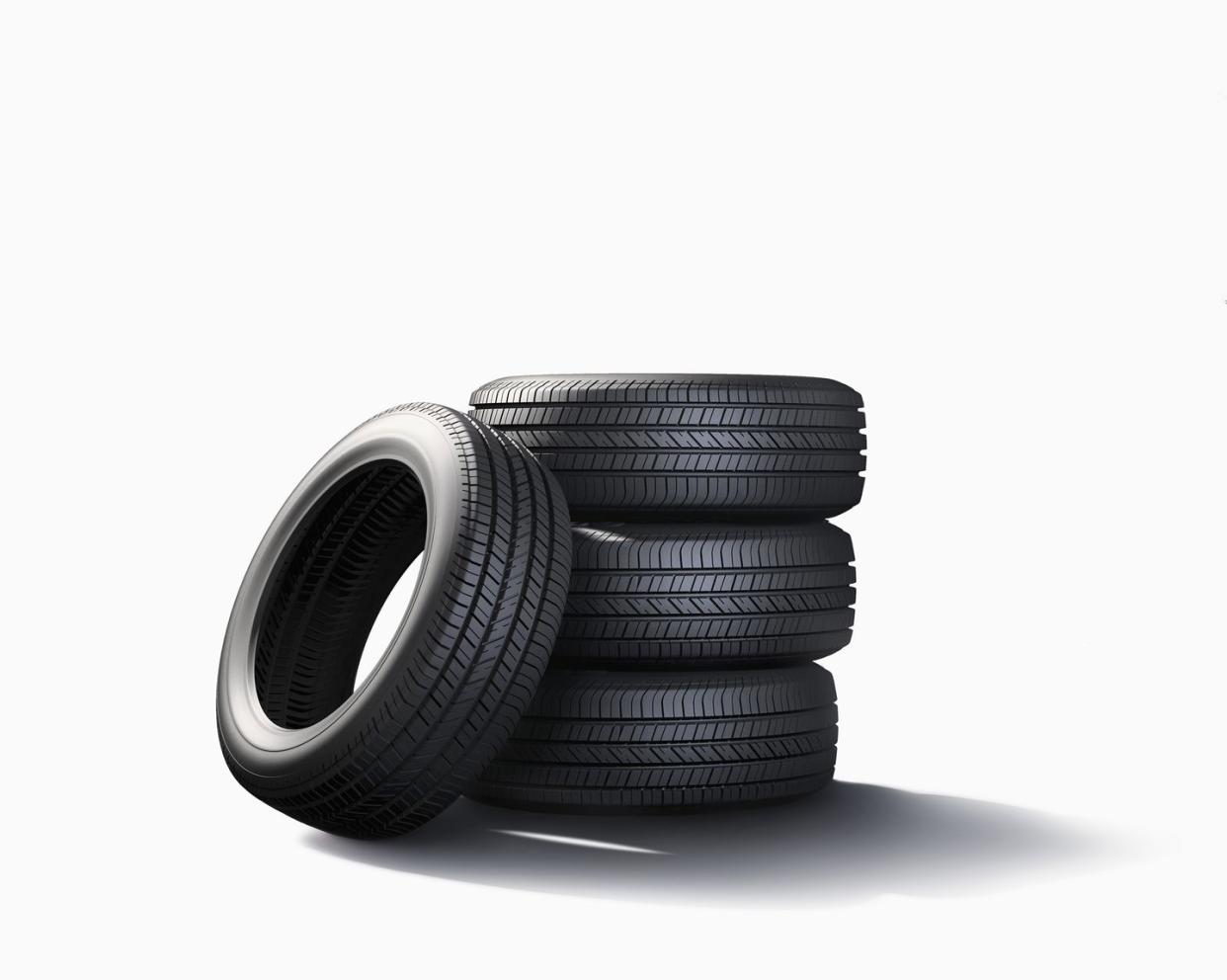
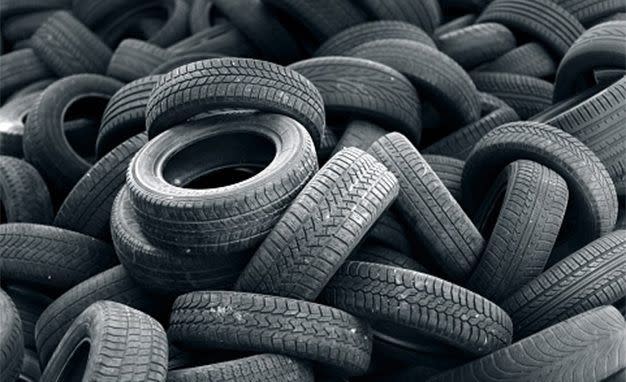
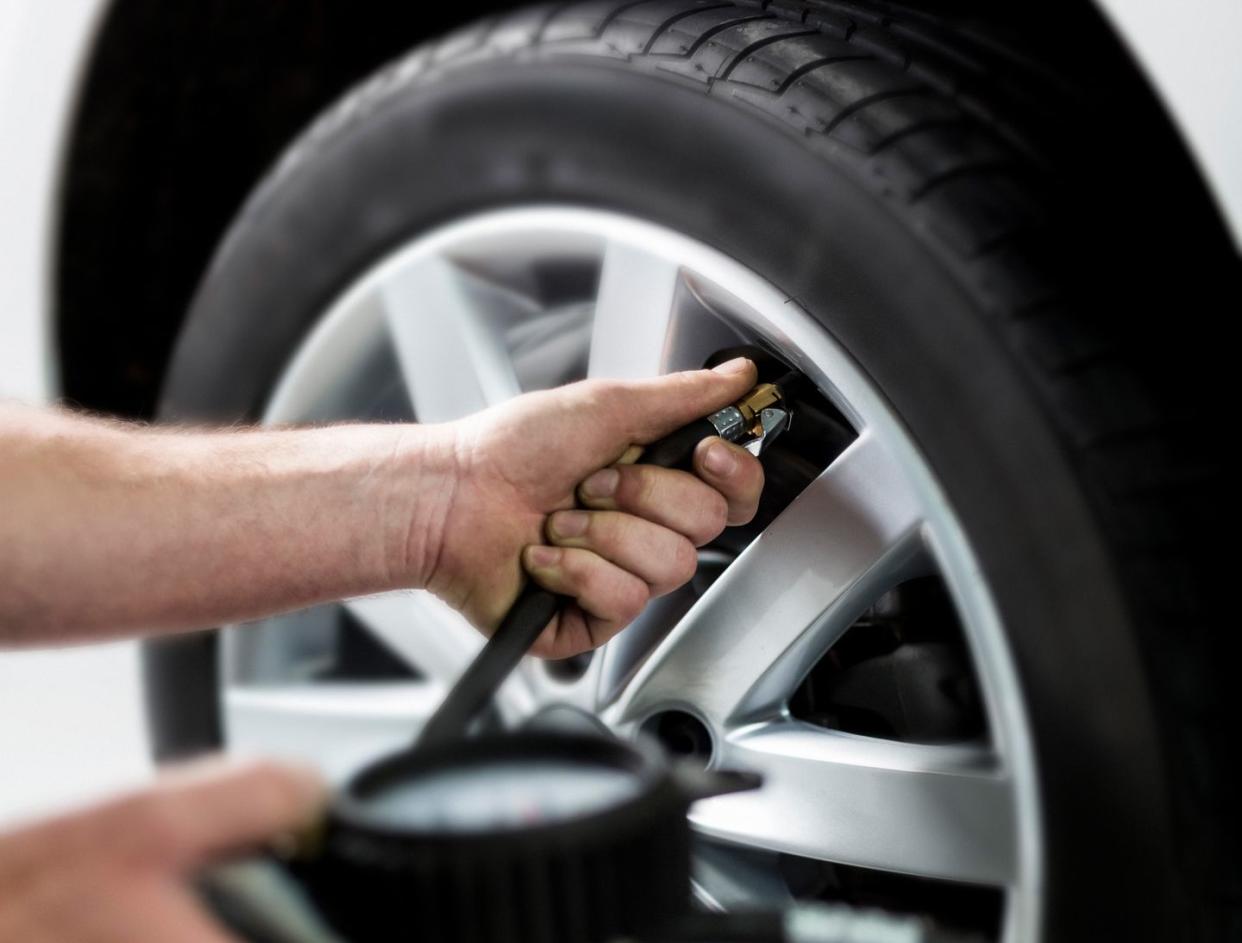
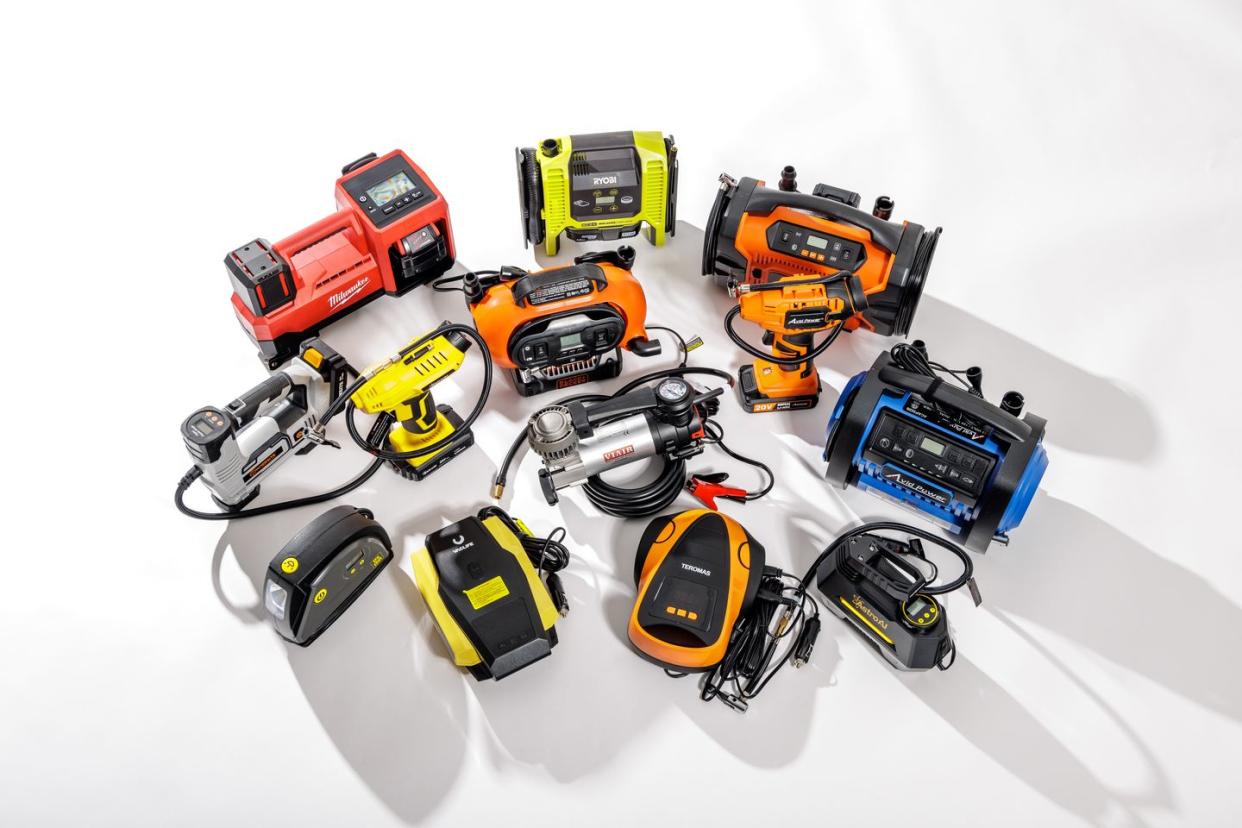
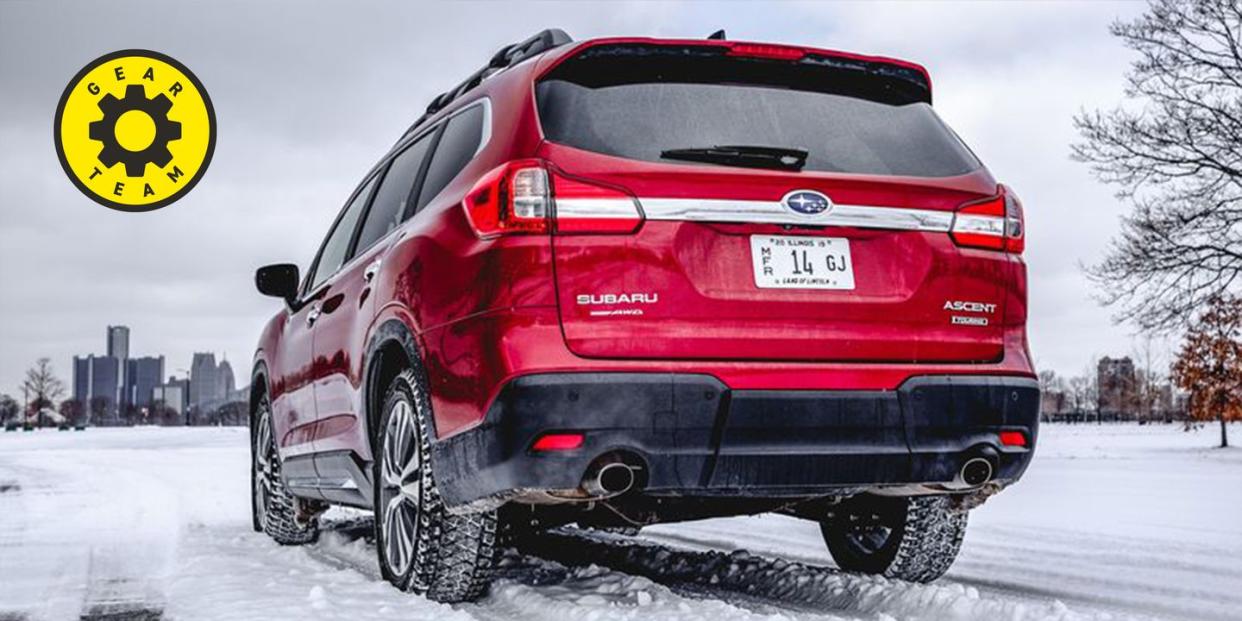
Check your engine oil
If your car has an engine, it needs good, quality oil to keep its parts moving smoothly. Unless you bought an EV, this section pertains to you. Make sure your car's engine oil is changed regularly at the intervals suggested in its owner's manual and keep an eye on the oil level to make sure it isn’t leaking or burning off, leaving too little oil in the reservoir. To do this, pop the hood and locate the dipstick. Pull the stick out and wipe it off with a cloth or paper towel. Insert the stick back into the hole and push it all the way down into the reservoir. Pull it back out and check the end to see if the oil level is within the acceptable range indicated on the stick. If it's low, add more, but make sure you use the appropriate type for your car.
Some cars have digital dip sticks. In this case, you'll want to consult your owner's manual to determine how to locate this tool within your car's infotainment or instrument cluster screen.
How often to change your oil
Depending on what type of vehicle you drive and how you drive it will determine how often its engine oil should be changed. For the most part, you'll want to follow the intervals outlined in your owner's manual. Some vehicles may require an oil change every 5000 miles, but others may recommend a 10,000-mile interval.
If you are someone who doesn't drive a lot and you don't hit the mileage interval within 12 months, it's recommended that you change the oil at the one-year mark as the oil can degrade after that period and lose viscosity. You should keep an eye on your oil level between changes and if you notice the oil looks dark or has metal particles in it, you should take it in for a service.
How to know what type of oil your car uses
Under the hood of most cars should be a sticker or placard that suggests an appropriate engine weight. It may even suggest a specific brand of oil. If not, your owner's manual has this information. Common engine oils come as either synthetics or conventional (nonsynthetic) and are offered in a variety of viscosities and are labeled in a particular way. For example, you might see something like "10W30" listed. This refers to the oil's viscosity levels where 10 is the oil's viscosity in cold temperatures and 30 is the viscosity in normal operating temps.
Check other important fluids
Of course, engine oil is just one of many fluids your vehicle requires. Brake fluid, transmission fluid, engine coolant, power-steering fluid, and windshield washing fluid, are all common fluids you can check and top off as needed.
How to know how often to change your vehicle’s fluids
Windshield washing fluid is the most obvious when it runs out: Your nozzles just stop squirting it onto the windshield when you hit the wash lever. It's harder to tell when the others listed above need a change unless you pop open the hood and physically check the levels. For the most part, it's recommended that you follow the service intervals set by the manufacturer, but if at any point any of those fluids look dirty or the associated part or parts of the car is/are behaving irregularly, it may be time to seek out service.
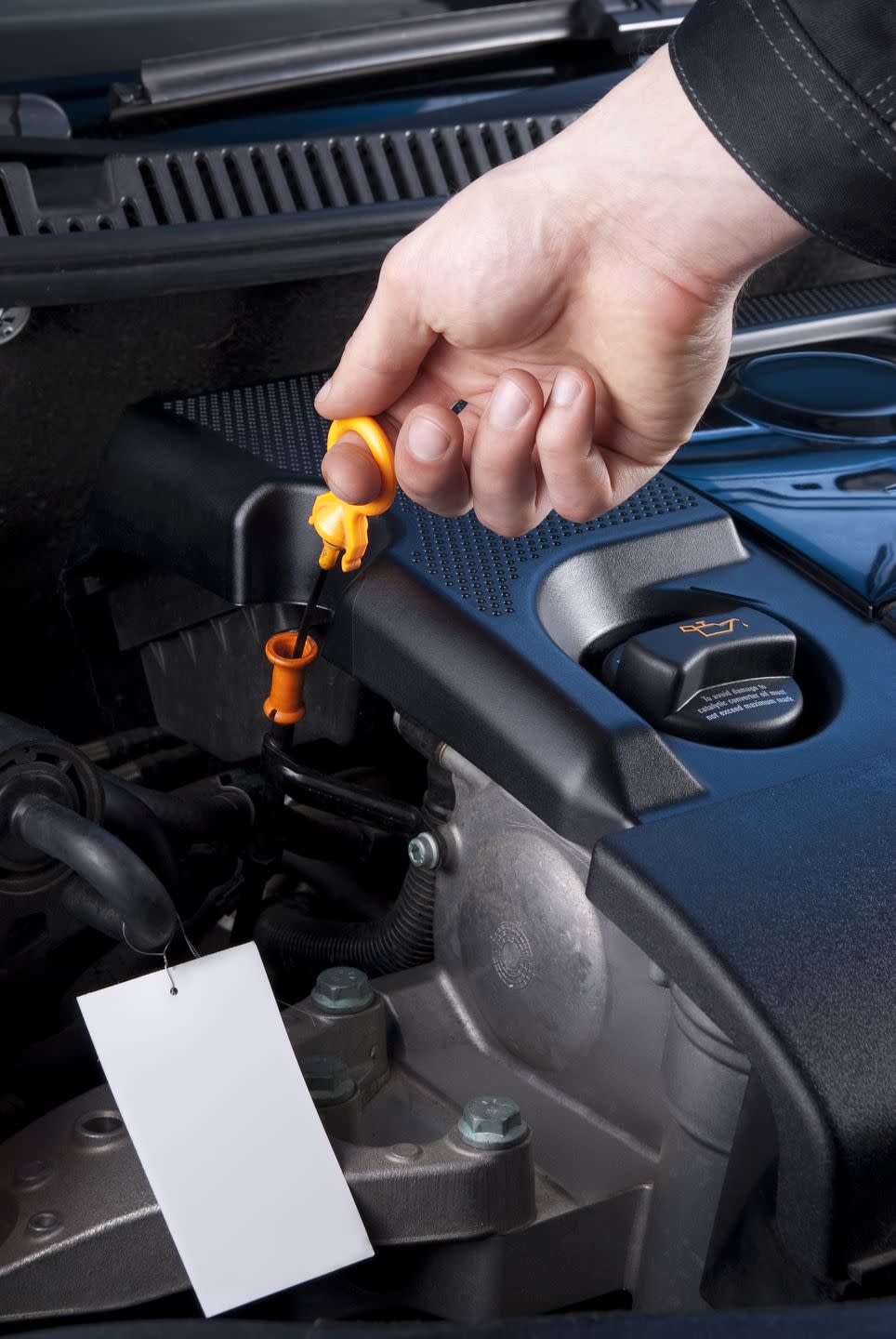
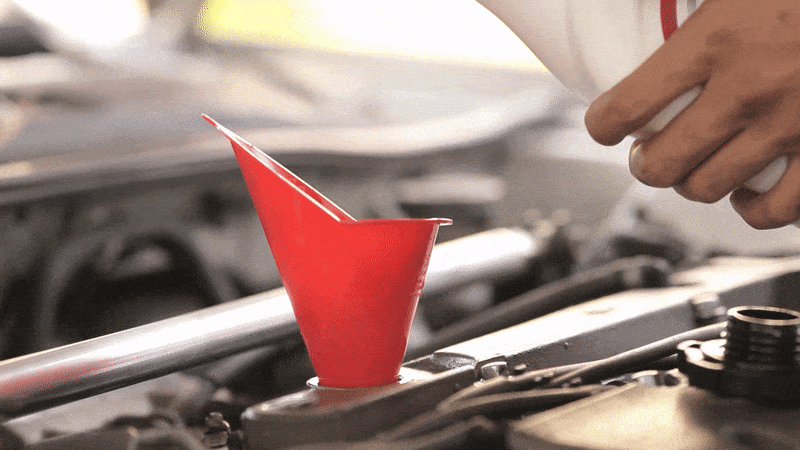
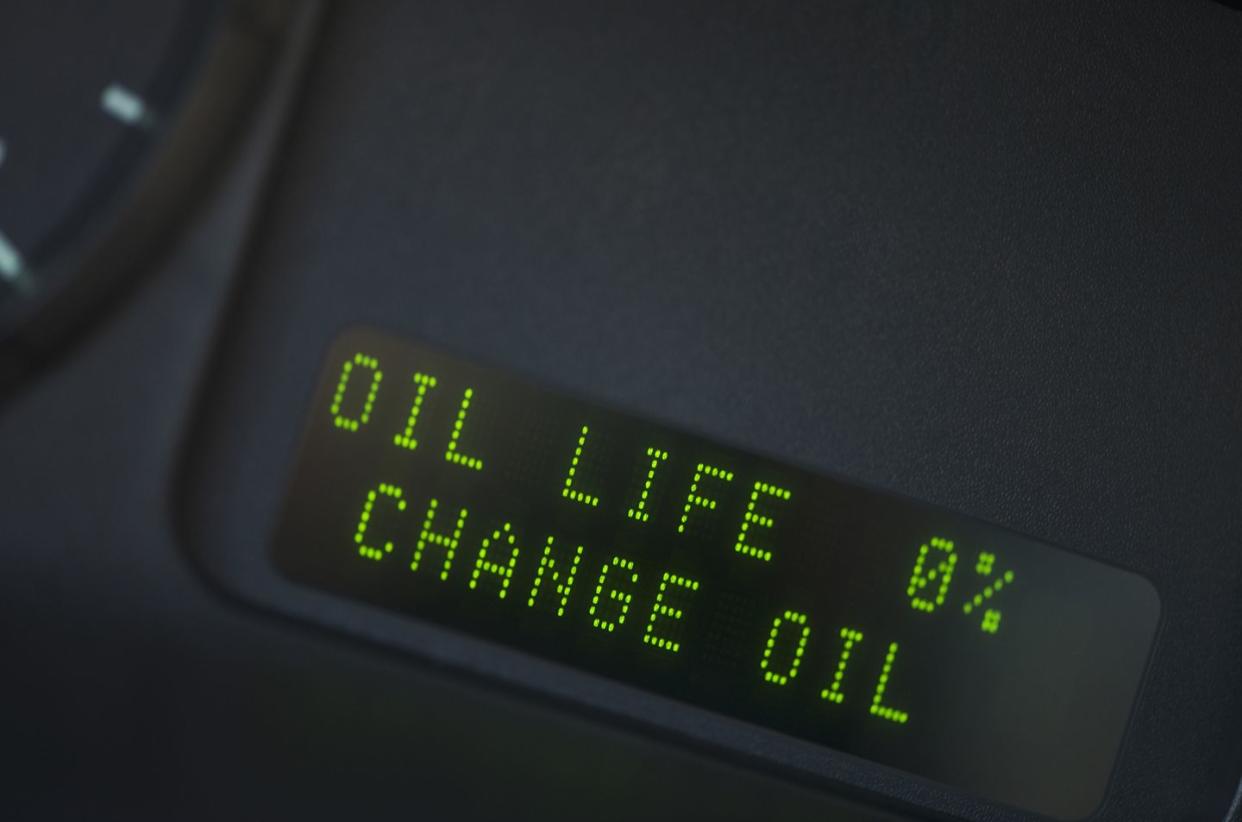
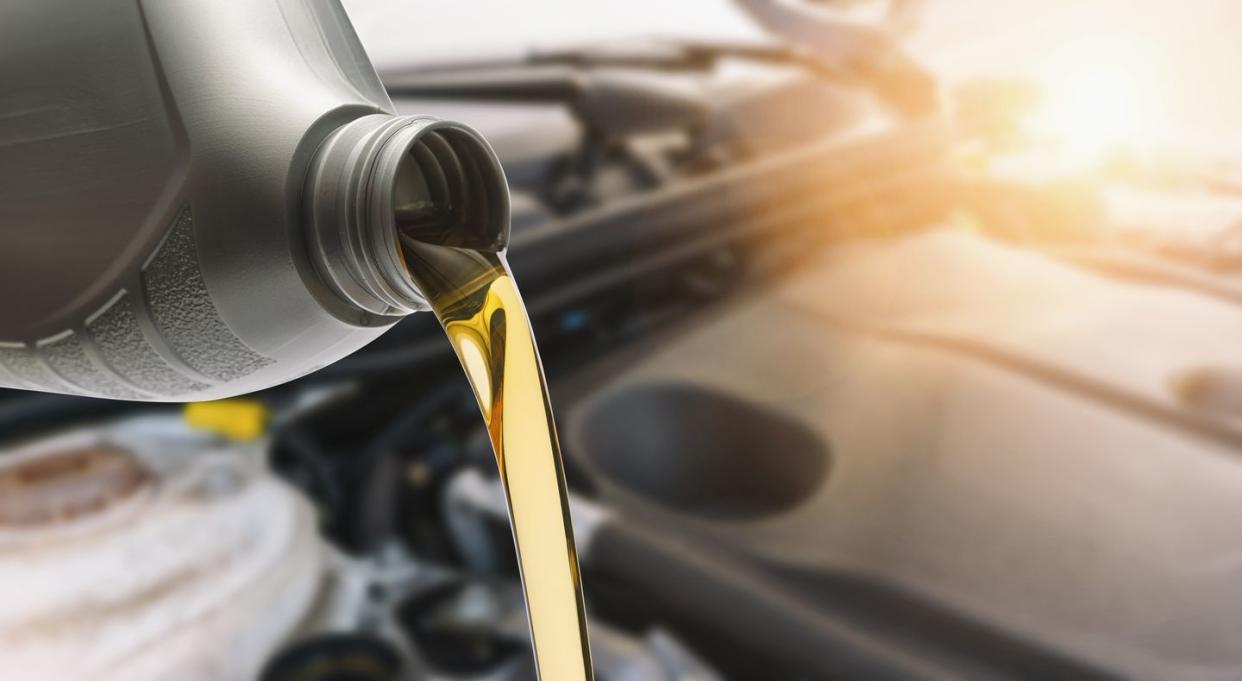
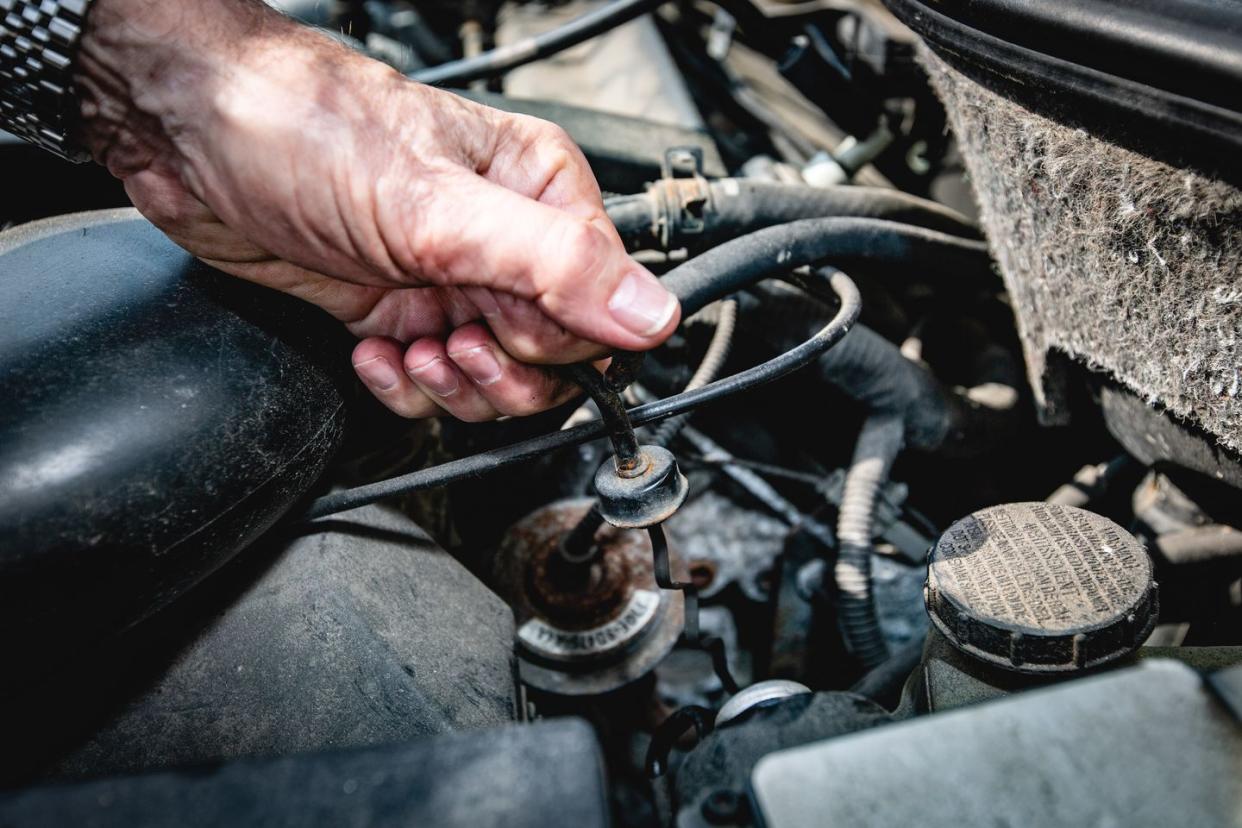
How to Check Transmission Fluid
Check your headlights, taillights, and the lights over your license plate
Not only is driving with inoperable lights a hazard to you and other drivers, but it can also earn you a ticket from the local constabulary. Some cars have a feature where a warning light or message will appear if one of your exterior lamps is no longer operable, but many vehicles don't. Luckily, it's relatively easy to check the status of these lights by turning them on and doing a walkaround to check if any are burned out. Brake lights are the hardest, as they may require an extra person to hold the brake pedal down while you walk around back to check, but in a pinch, consider backing your vehicle up toward a light-colored surface, like a garage door, and holding down the brake pedal while you check for reflections in the rear-view mirror. This exercise may be easier at night.
Check and replace your windshield wipers
Nothing is more frustrating than turning your wipers on during the first rain of the year only to find they've degraded and no longer fully clear the windshield of droplets. It can also make it unsafe to drive since your line of sight may be obscured. Keep tabs on your wipers and if they aren't looking healthy, it's time for a replacement.
How often to replace wipers
Depending on the climate in your neck of the woods, your wipers might need replacing annually or they might last for a few years. Hotter, drier climates tend to degrade the rubber in wipers quicker, so folks in the American Southwest and parts of California should plan to replace more frequently than drivers in northern areas.
How to know what type of wipers your car needs
If you've ever walked down the wiper blade aisle at your local auto parts store, you probably noticed the dizzying array of sizes and brands available. Of all those available wipers, your car will need specific sizes, sometimes a different size for each front wiper. Your owner's manual may list the specific sizes, but if not, then look for the booklet in the wiper blade aisle that features a size chart and breaks things down by make and model.
If your vehicle has a rear wiper—and most SUVs, hatchbacks, and station wagons do—you'll need to add another wiper blade to your shopping list.
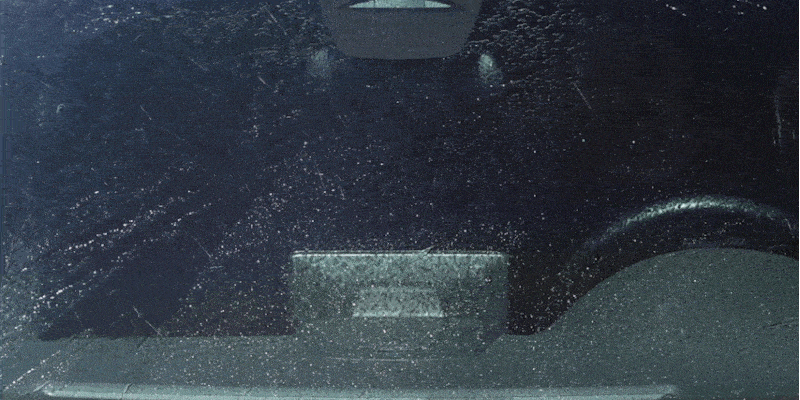
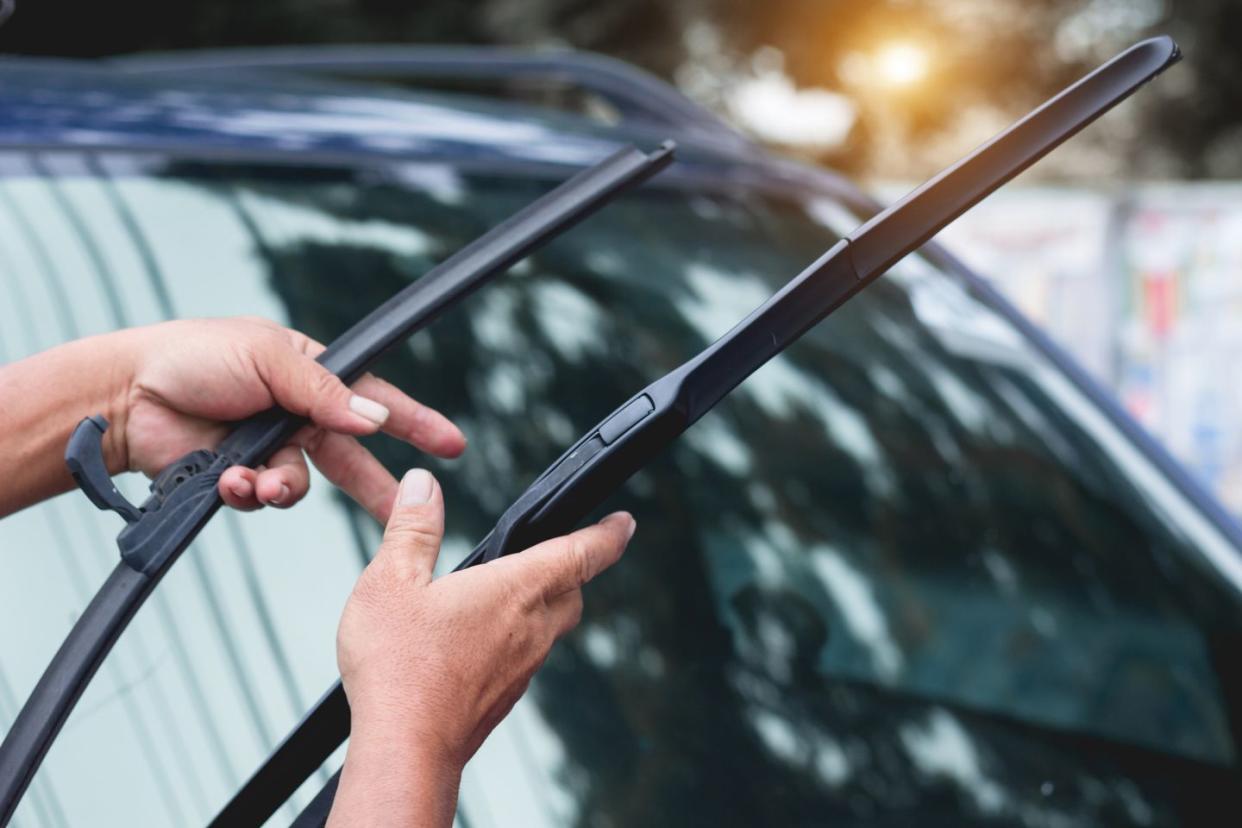
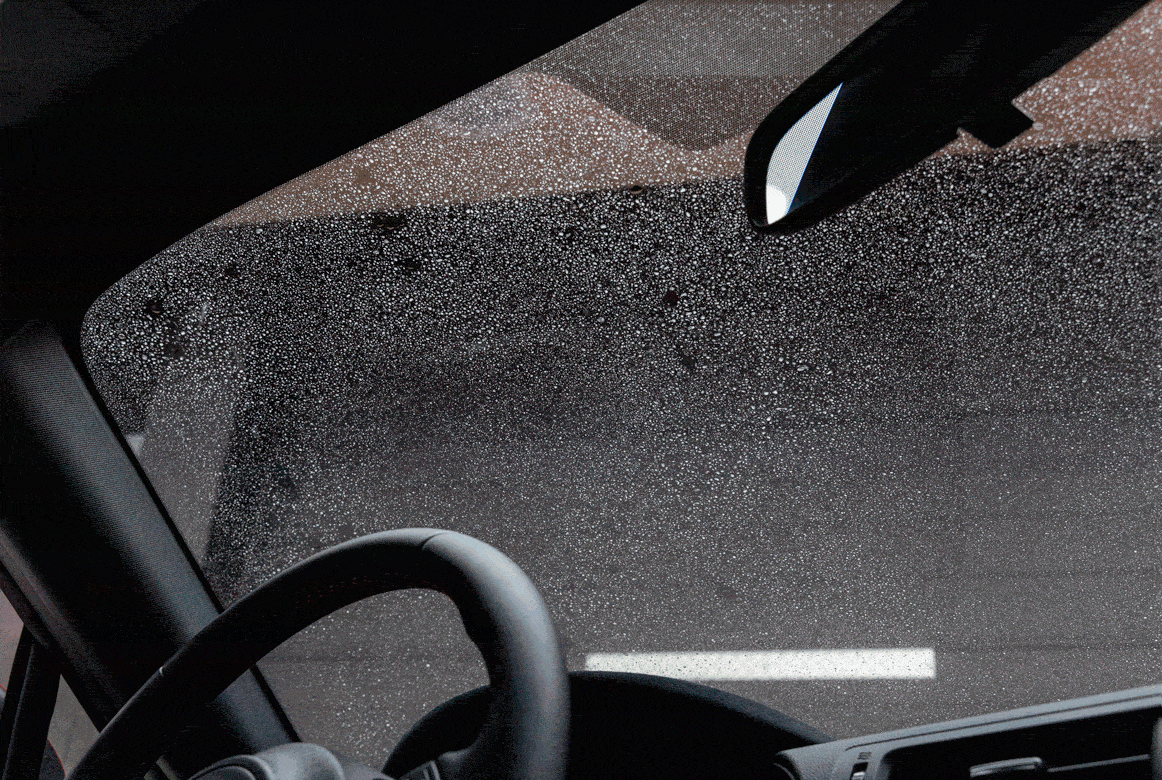
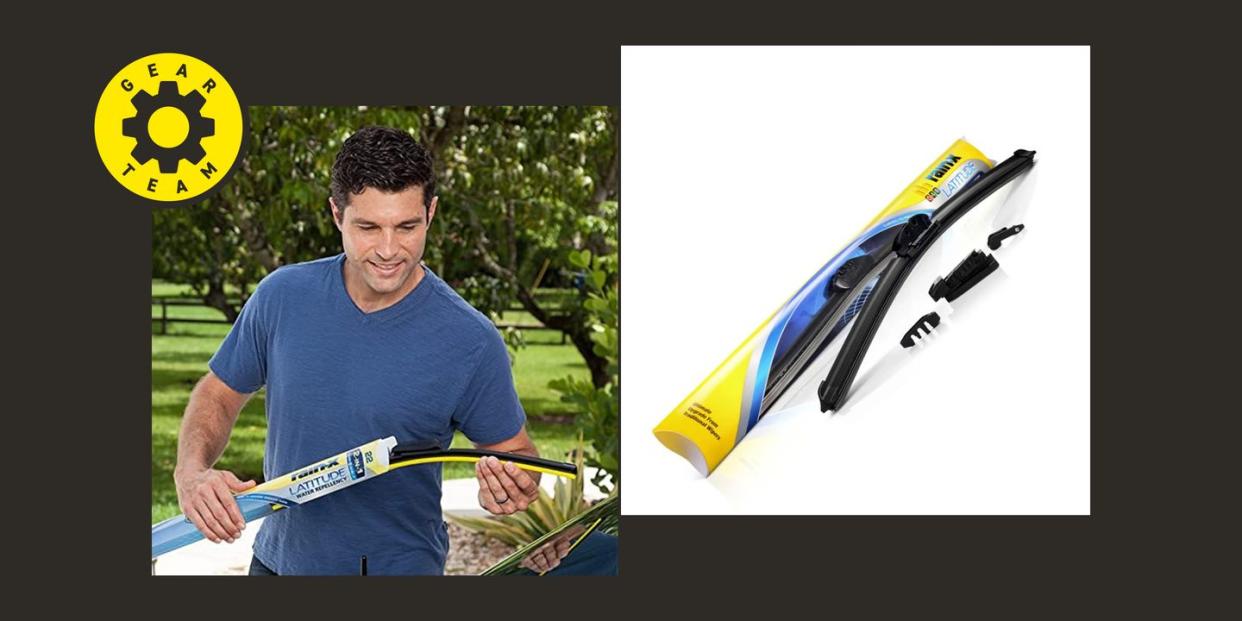
Deal Alert: Top-Rated Wiper Blades
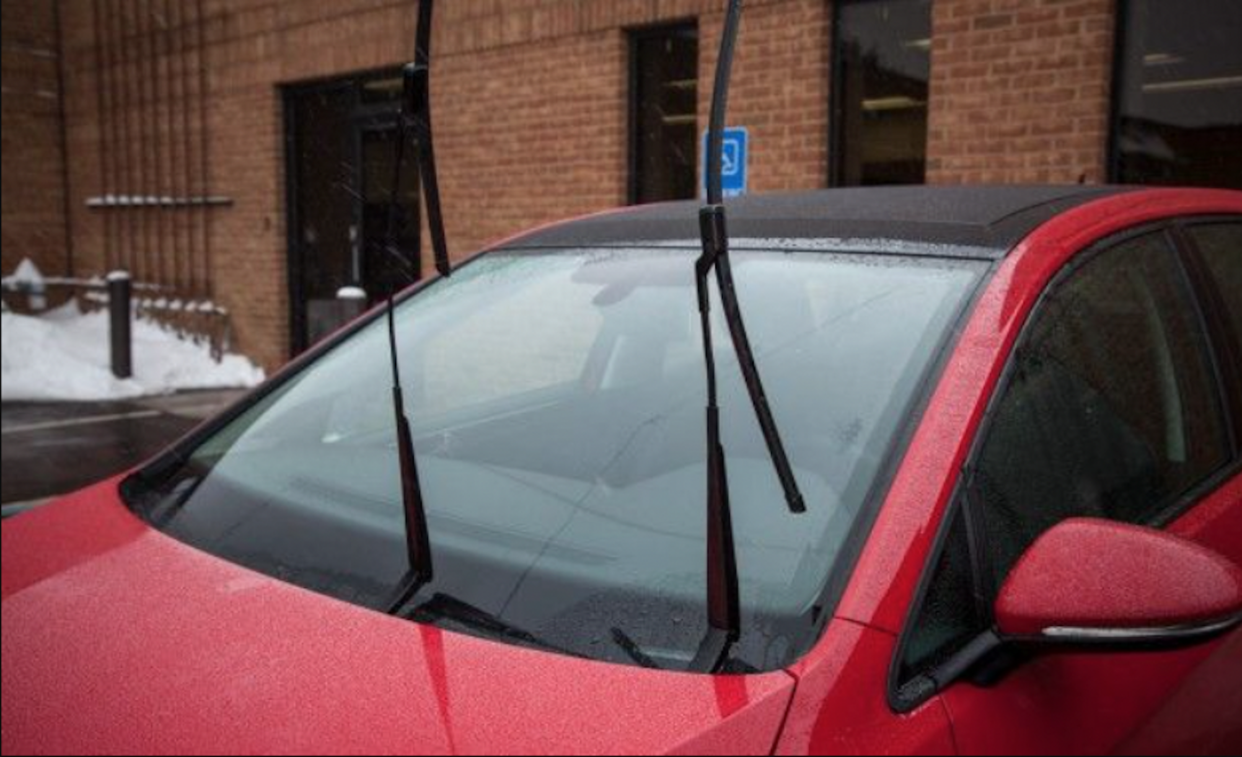
Wiper Service Position Explained
Check your air filters
Cars: They're just like us. What do we mean by that? Just like human bodies, internal combustion engines need to breathe freely to perform at their best. Unlike us mammals, cars don't have lungs, they have air intakes that suck in air from an opening in the car's body (usually the area we refer to as the grille) and pass it through a filter. Those filters, however, need to be occasionally cleaned or changed.
Check your engine air filter
Locate the air box under the hood of your vehicle. It will likely be a large black plastic item with metal clips. Undo the clips and open the box so you can see the filter. Filters come in different sizes and shapes, but most are made from a white paper-like material with a rubber seal around the edge. If the filter looks gray, dirty, or clogged with debris like leaves, it's time to swap it for a fresh one. It's recommended to change your air filter regularly, and some manufacturers build this service into the car's maintenance schedule.
Check your cabin air filter (if equipped)
Unless you're driving an especially old car, you likely have a cabin air filter to keep an eye on too. Separate from the engine air filter, the cabin air filter helps keep allergens and pollutants out of your vehicle's interior. Sometimes the cabin air filter is accessible from under the hood. Other times it's accessed via the glovebox.
Check your car's owner's manual for its location and plan to change it out every year or so. If you suddenly get a funky smell when running your climate control system or notice that airflow through your vents is weak, then you may want to check the state of your cabin air filter, as these are often signs that it is overdue for replacement.
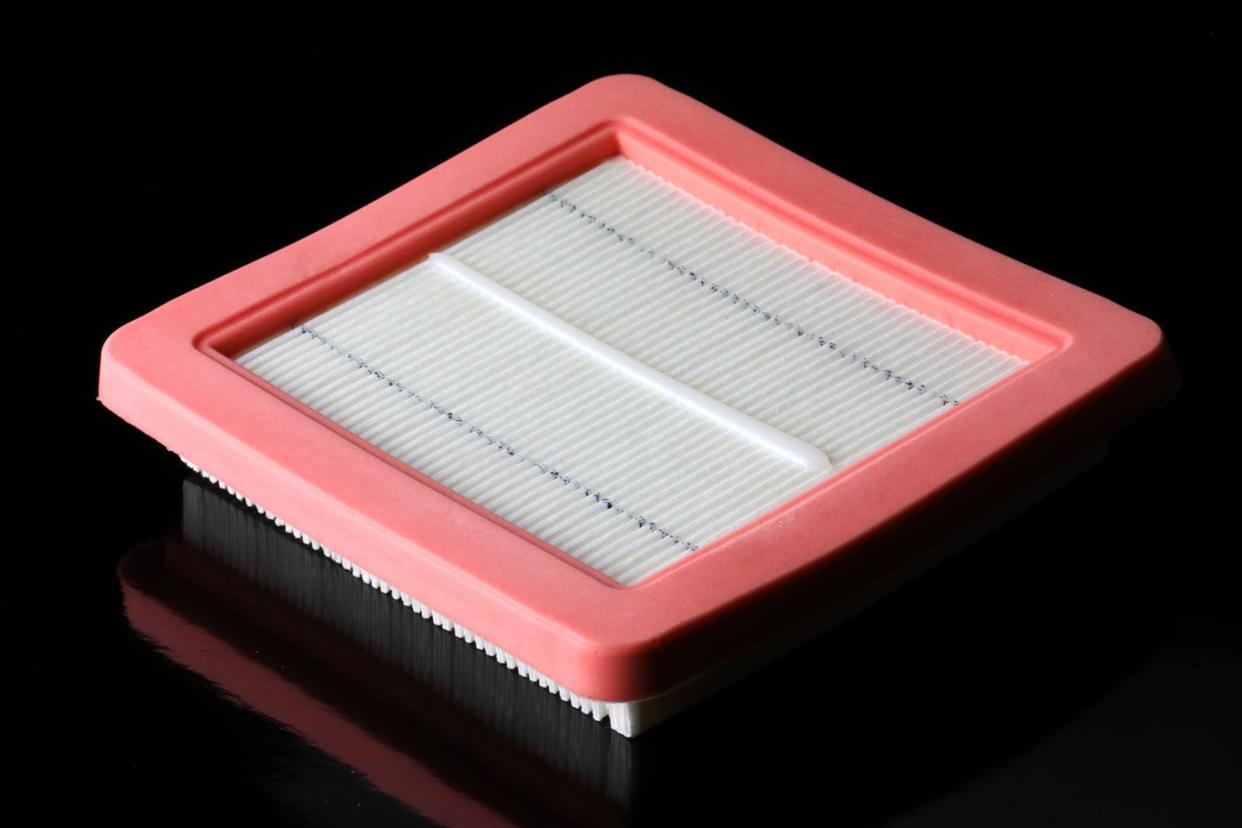
How to Change an Engine Air Filter
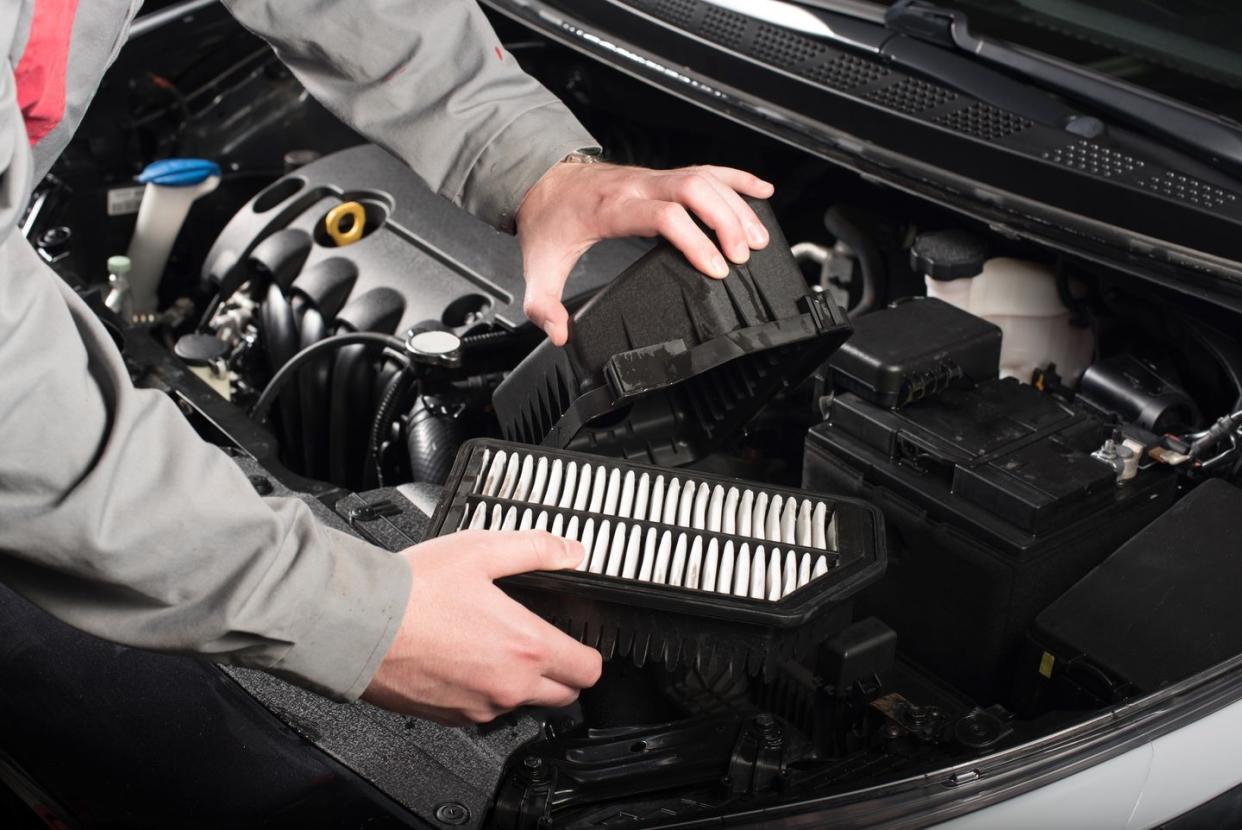
How to Change a Cabin Air Filter
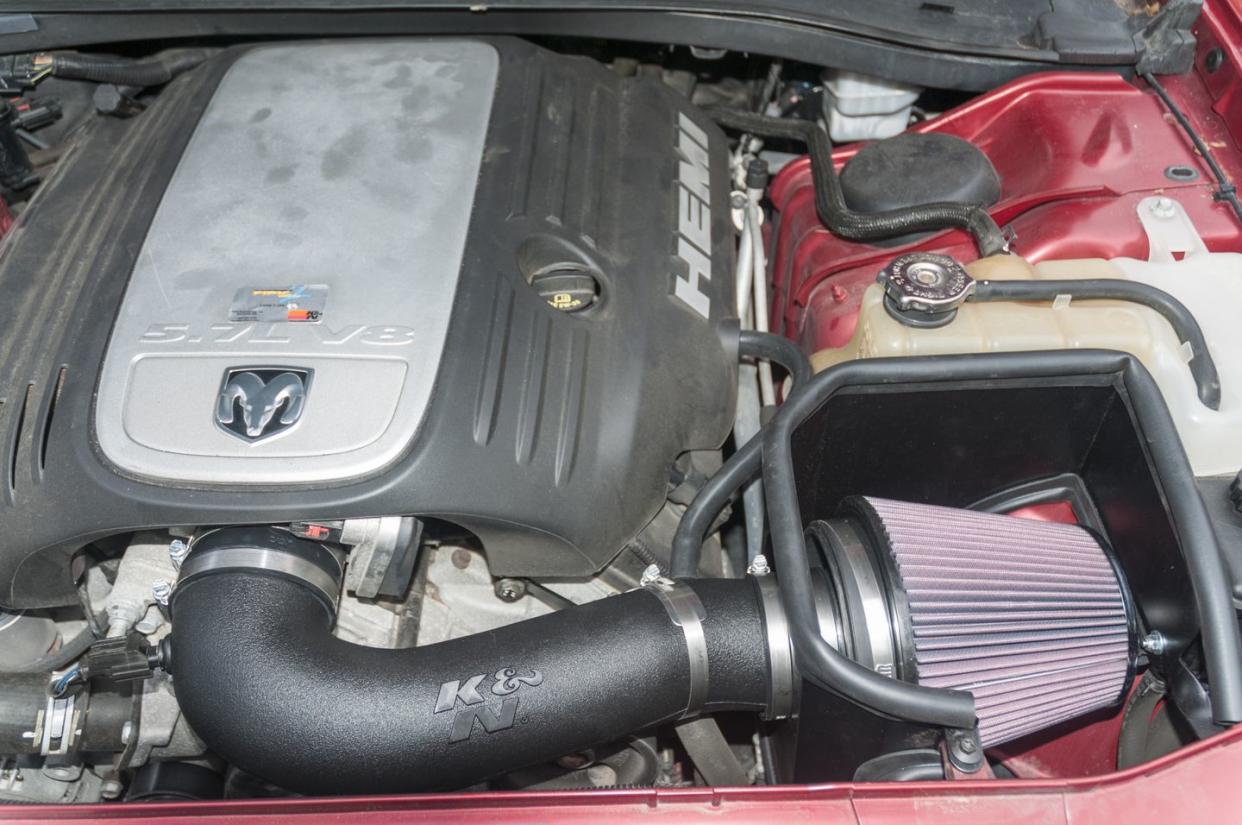
How to Clean a Cold Air Intake
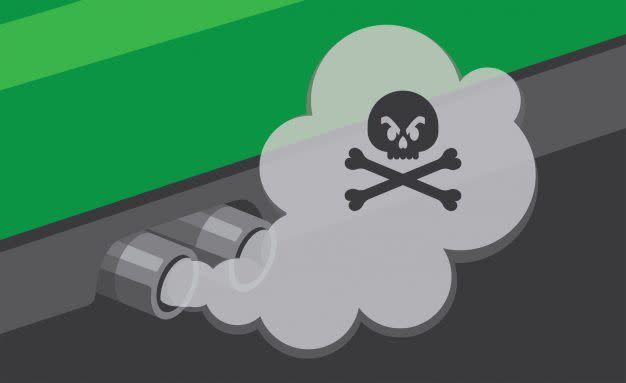
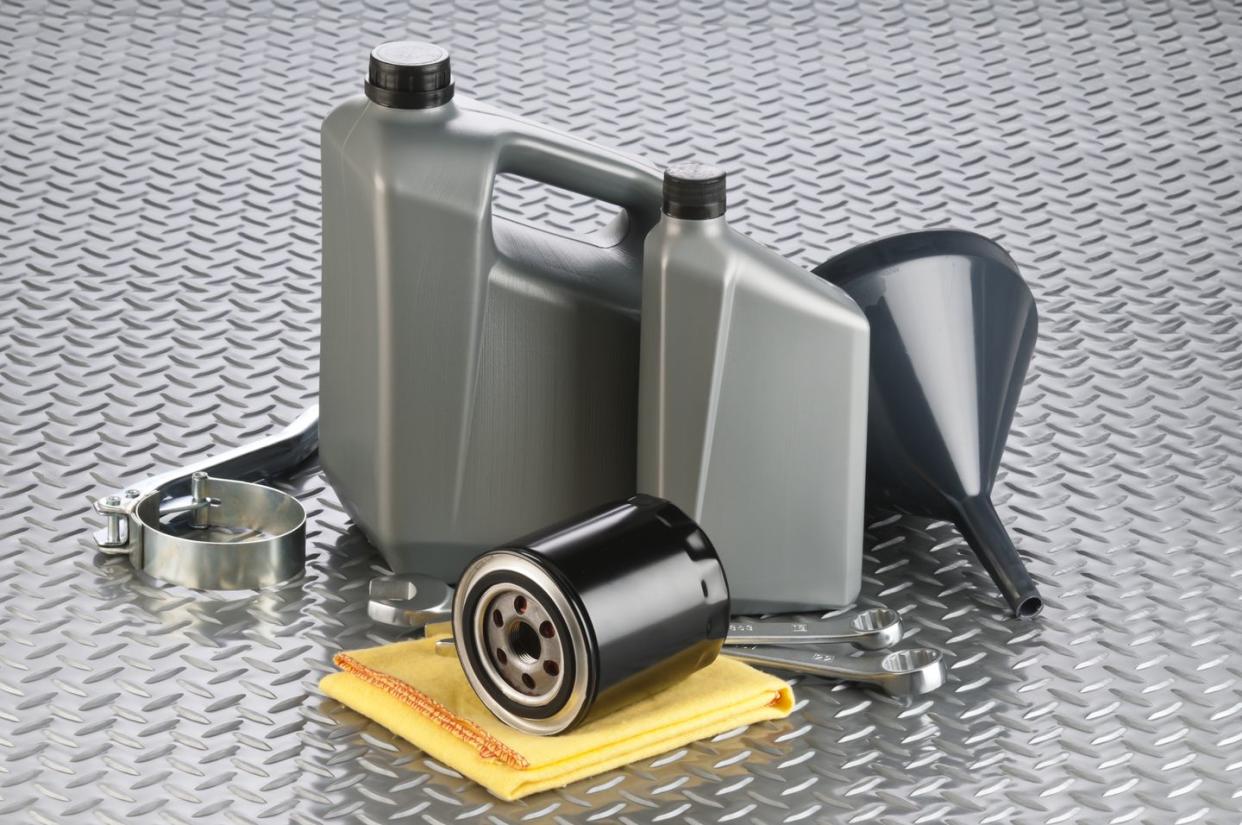
Test Your Battery
If your car struggles to start or won't start at all, it could be your 12-volt battery. Almost all modern cars rely on a rectangular 12-volt battery to provide juice to many of their electric bits, and for many, this includes the starter. If a 12-volt battery goes bad, and its voltage drops below a certain level, then it can't provide the power needed to get the starter to kick over the engine and get you going.
How to test a battery
With a digital tool called a multimeter, you can test your battery's voltage for yourself. With the ignition off, touch the red lead of the multimeter to the positive battery terminal and the black lead to the negative terminal. If the multimeter displays a voltage under 12.4, the battery likely needs to be replaced.
How often to change a battery in a car
Batteries should last several years. They may even last up to 10 years if your vehicle is properly maintained. And that's a good thing, because modern car batteries aren't cheap, and many run between $100 and $500 depending on the type required by your car.
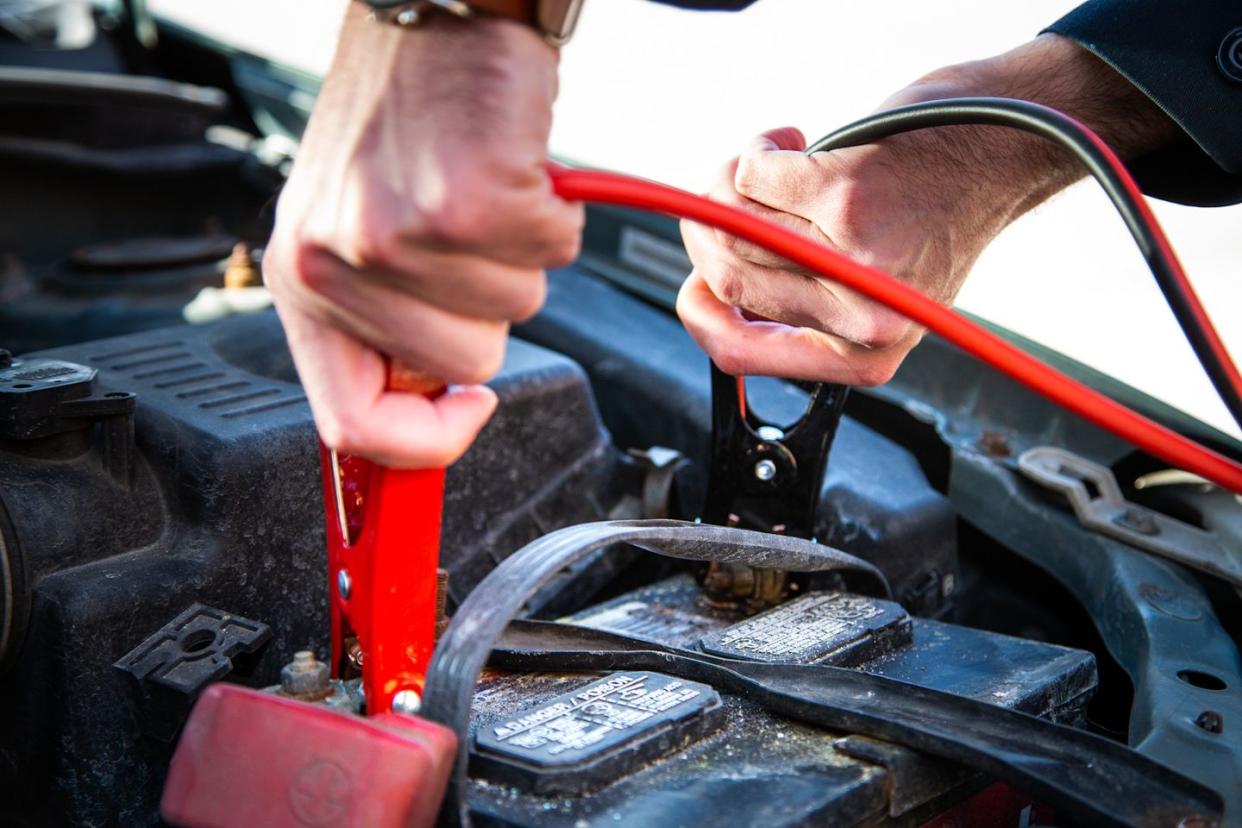
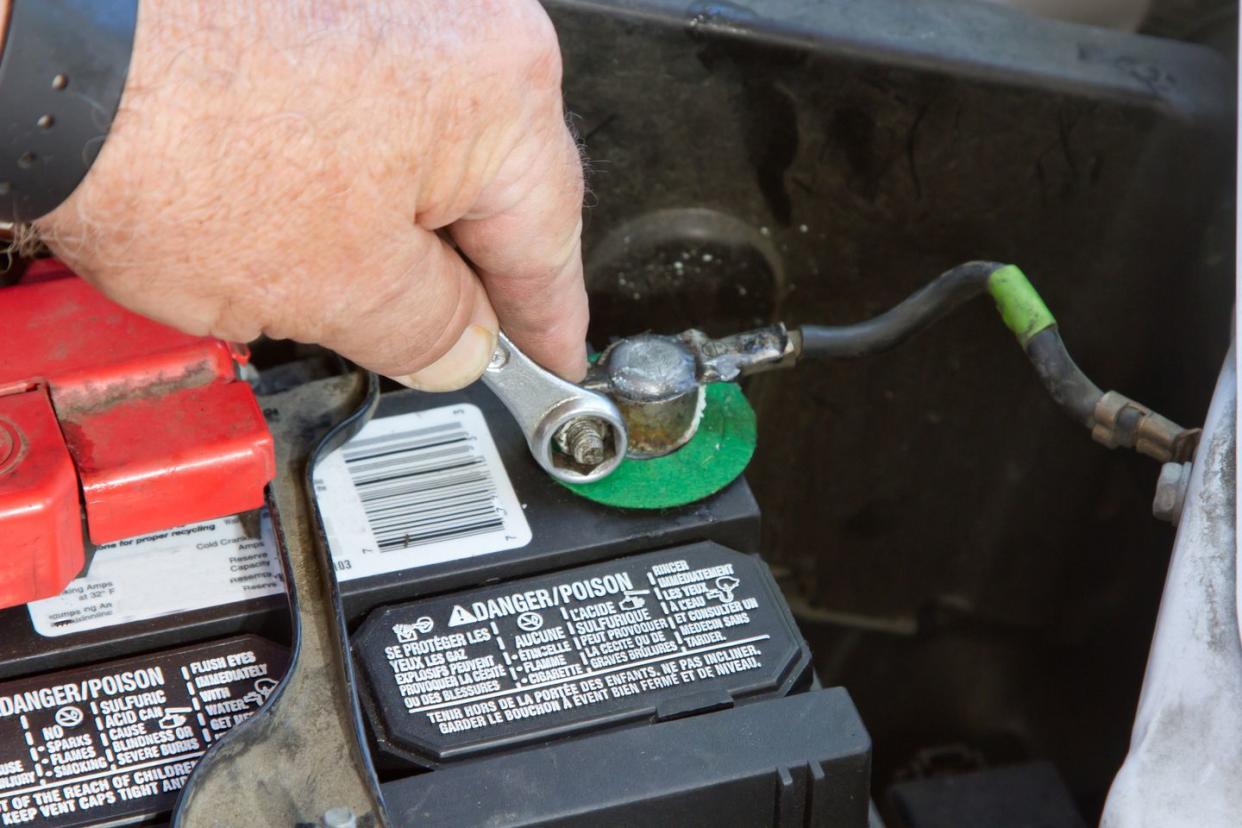
How to Disconnect a Car Battery
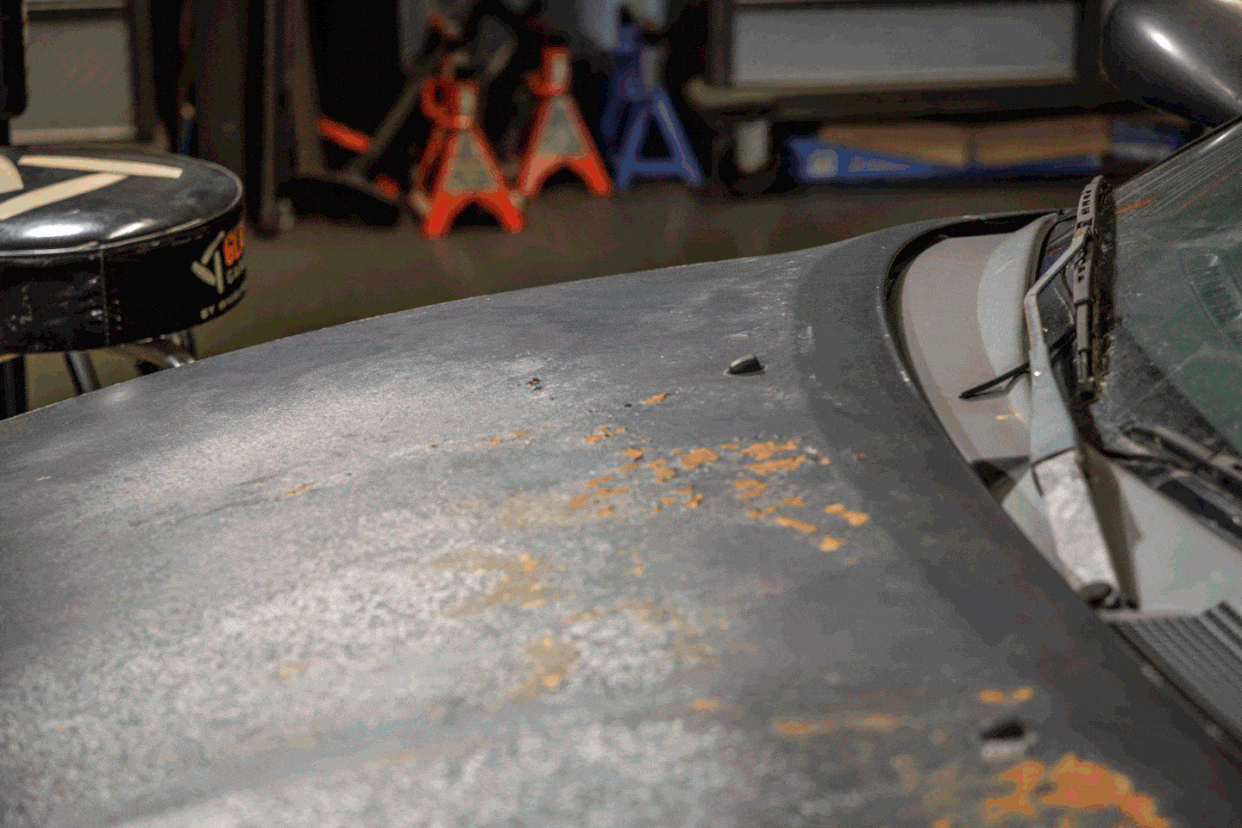
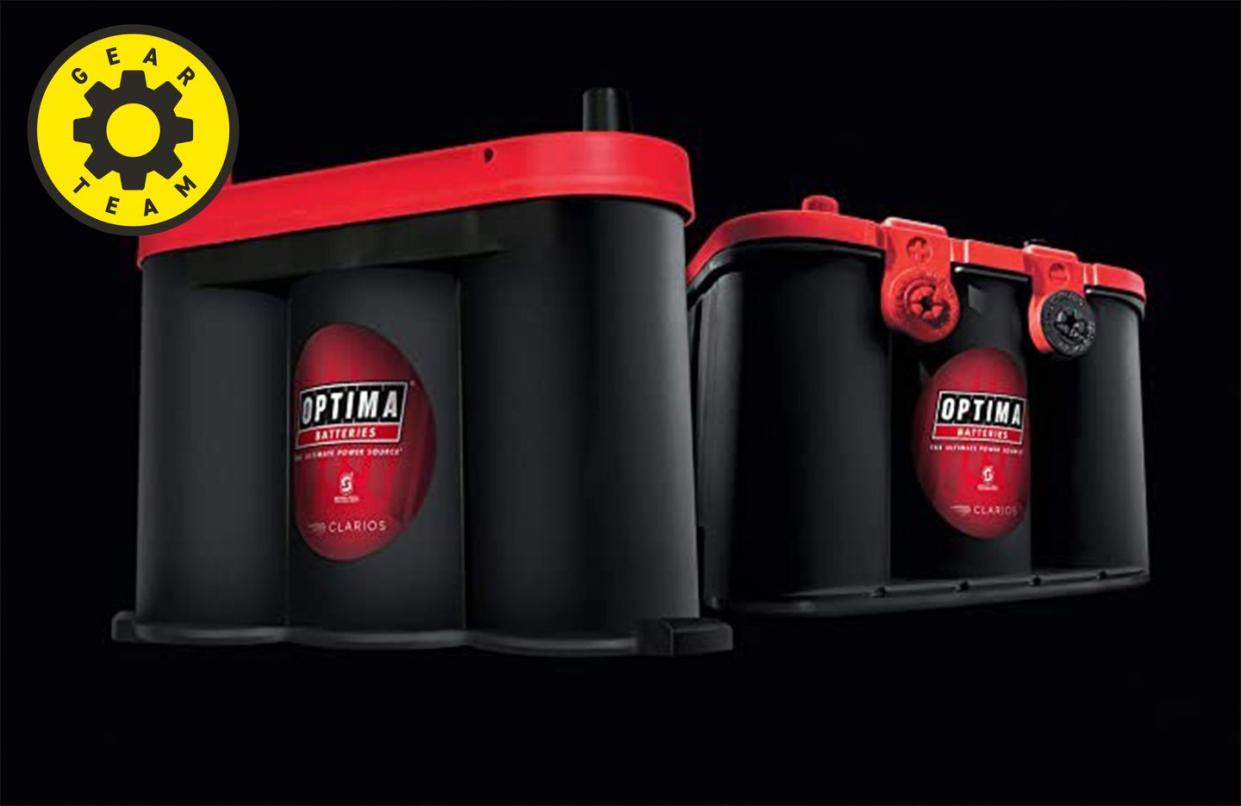
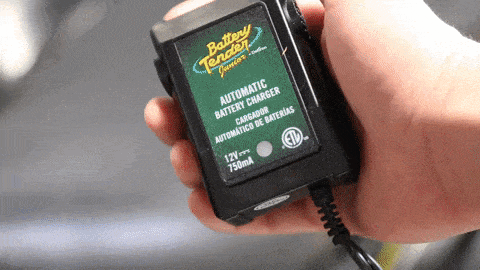
Inspect Your Brakes
Like tires, brakes are an essential safety feature of any vehicle, and letting them wear to the point where their effectiveness is reduced is both dangerous and irresponsible. If you notice any squealing noises or feel any pulsations when braking, then your best bet is to take this as a sign that your brake pads or rotors need servicing. Otherwise, you should keep an eye on your brake pad wear occasionally. To do so, use a flashlight to inspect the pad by peering into the caliper assembly. If you notice that there's only a quarter inch or so of material left on the pad, it's time for new pads.
How often should brakes need to be changed?
Brake pads can last anywhere from 30,000 to 100,000 miles. Why the big range? That's because driving style plays a big part in brake wear. So does the material used in the pads. While certain high-performance sports cars will have ceramic pads, more common vehicles will use metallic or organic pads, all of which wear at different rates. Also, if you're prone to heavy braking use or do a lot of stop-and-go driving, your pads may end up with a shorter lifespan.
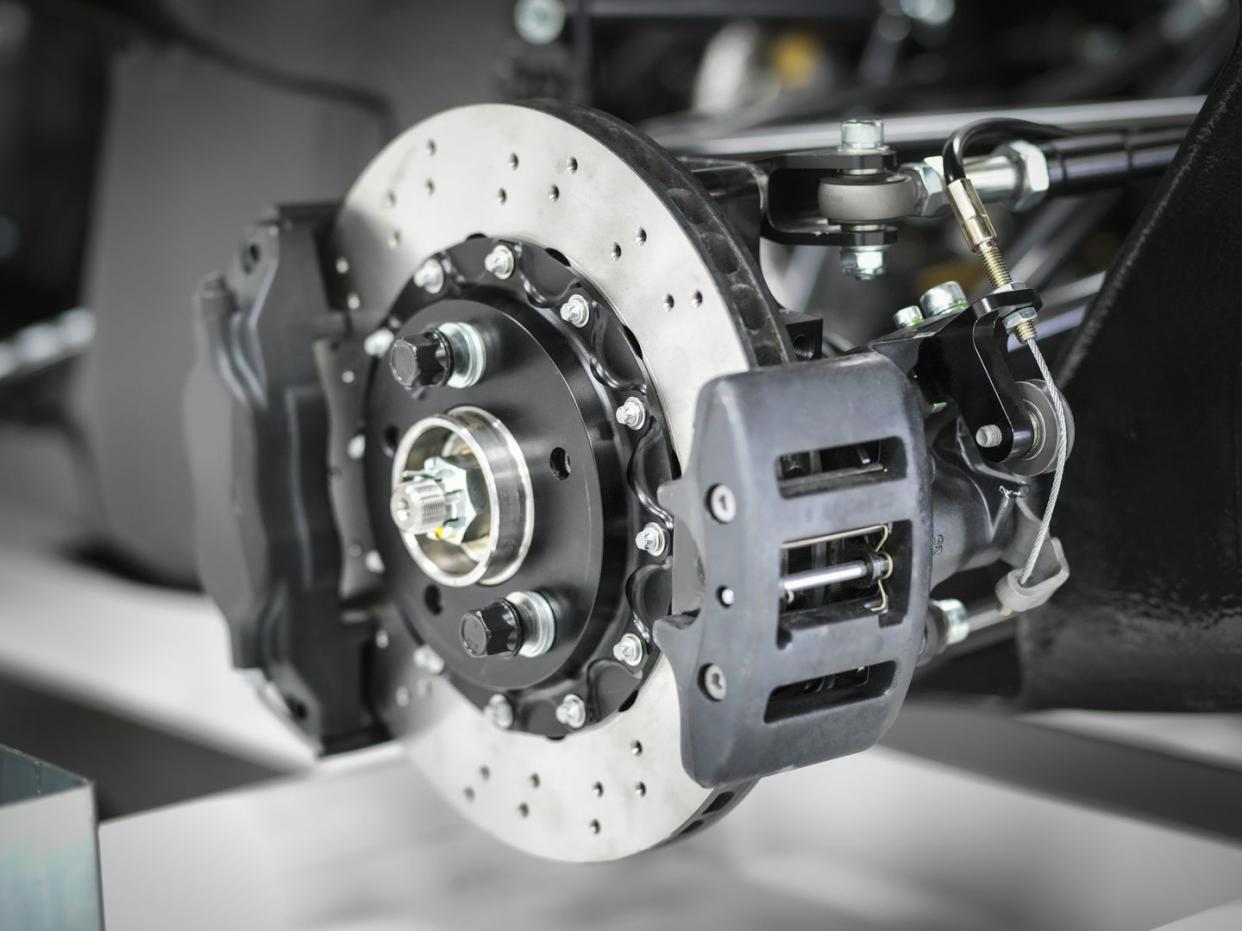
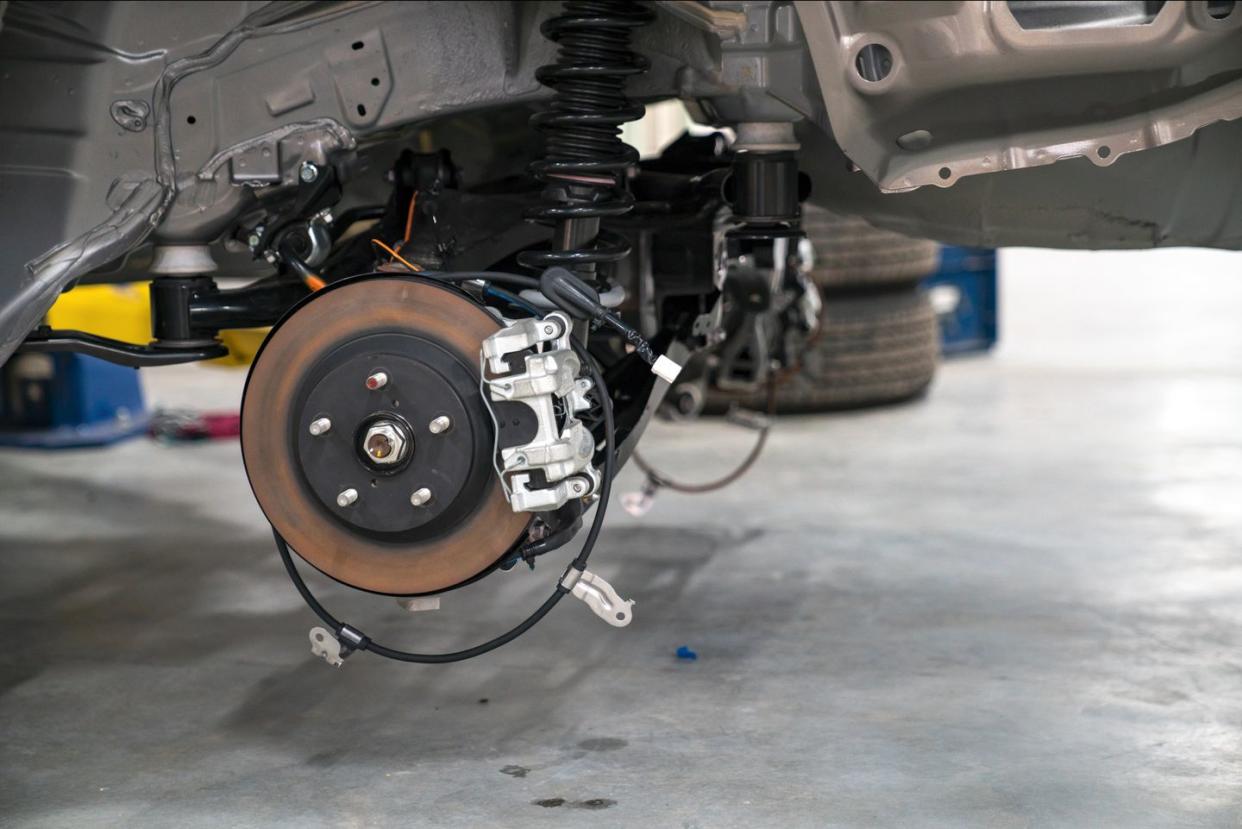
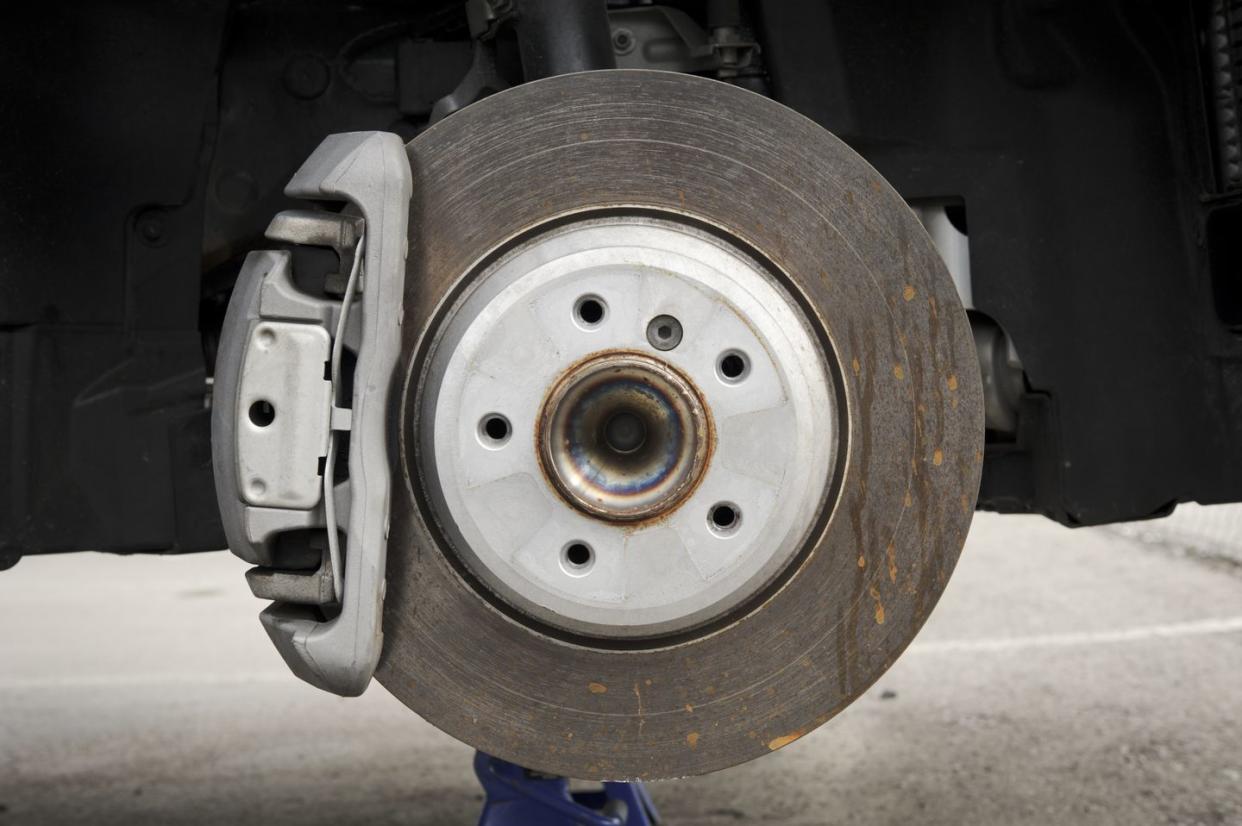
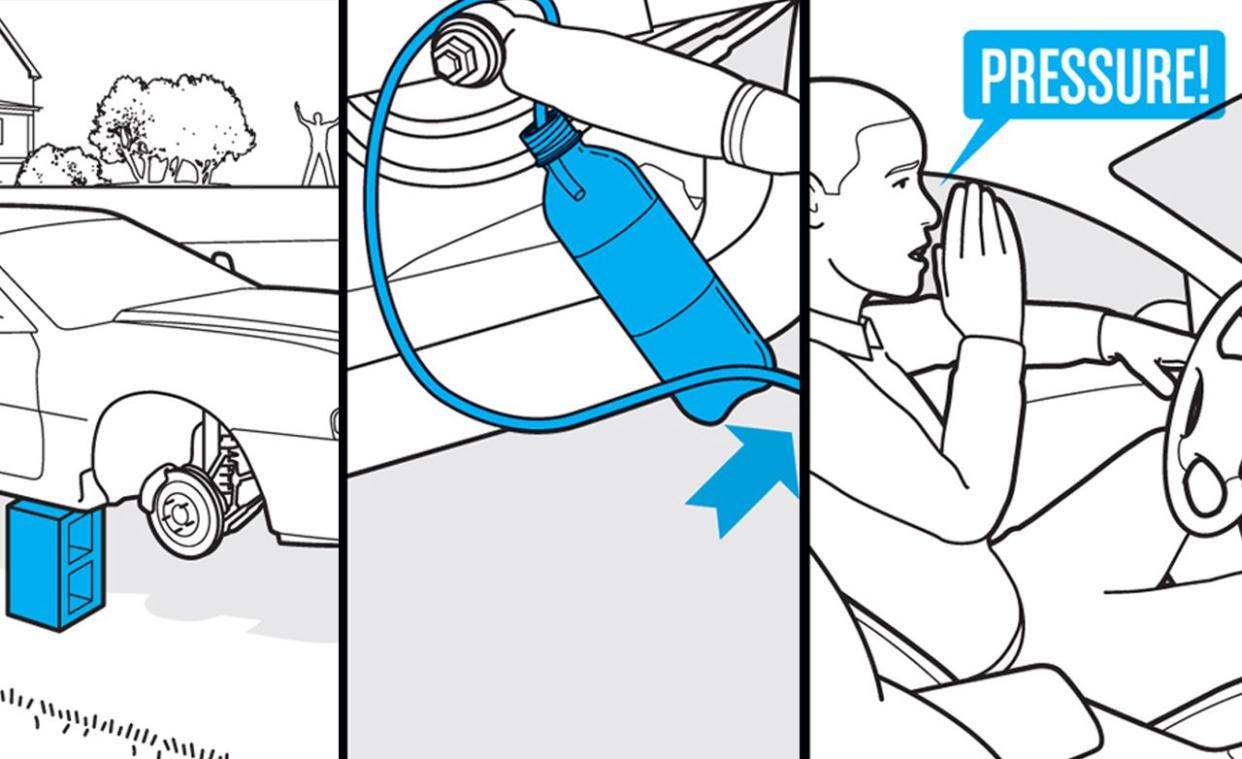
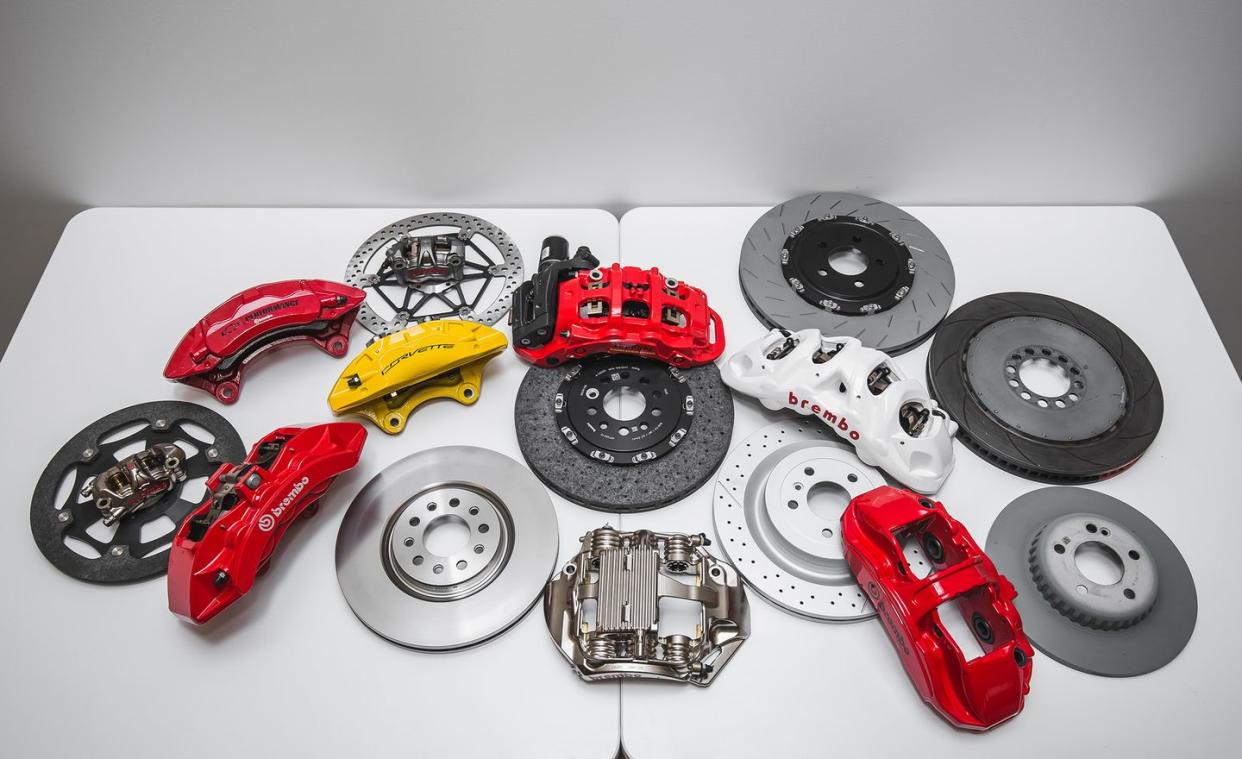
Check belts and hoses
If you pop the hood of your vehicle, you'll probably notice what resembles a chaotic tangle of rubber belts and hoses. These items are critical to keeping your engine running right. Belts are driven by motors and pulleys to keep things like radiator fans and air conditioning compressors working properly and the hoses direct coolant and other fluids to and from engine components. If at any point your belts look frayed or worn, or any hoses appear cracked or brittle, it's a good idea to get them replaced before they fail, because failure could result in more costly repairs.
Keep your car clean
Cleaning your car is more than just taking pride in ownership, it can help extend the life of your vehicle and preserve its value. Regular washing and waxing are recommended to keep the paint free from corrosion and damage. Meanwhile, frequently vacuuming the inside will help keep your carpet and upholstery free from stains and odors.
Wash the exterior of your car
Whether you go through an automatic car wash or choose to do an old-fashioned driveway hose-and-bucket wash, cleaning the exterior of your car is the first step in keeping it looking its best. Wash away mud, road salt, and other debris from your vehicle's paint and underbody, and take care to not rub dirt or other coarse objects on the paint to avoid scratches. It's a good idea to apply wax to your paint at least once a year to help ward off sun damage and add an extra layer of protection to your vehicle's clear coat.
Cleaning the interior of your car
Taking a vacuum to your interior is the easiest way to pick up dirt and debris from your carpets and seats, and most car washes offer drive-up vacuums that run on coins. Otherwise, a hand vac or Shop-Vac in your garage works well.
Once you've sucked up all the crumbs, consider wiping down the dashboard, center console, and door panels with a cleaning wipe or protectant to help remove dust and fingerprints. If you notice any stains in your carpet or upholstery while you're cleaning, consider spot-treating a specialized cleaning agent to tidy up those unsightly marks.
How often should I clean my car?
This is highly dependent on how you use the vehicle. If you're frequently traveling solo on short trips, your car may not get too dirty, and your interior may not need to be swept out frequently.
On the other hand, if you are a long-distance road tripper or tote kids to and fro, you'll likely find this type of high-traffic usage will require more regular cleanings to keep your vehicle's interior looking its best. Wash your vehicle's exterior when dirt and pollutants (i.e. sap, tar, acid rain, bird droppings, etc.) are noticeable, as leaving that on your paint for long periods can cause damage.
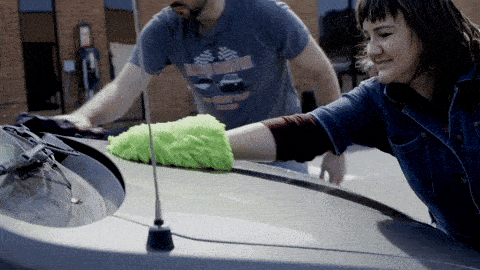
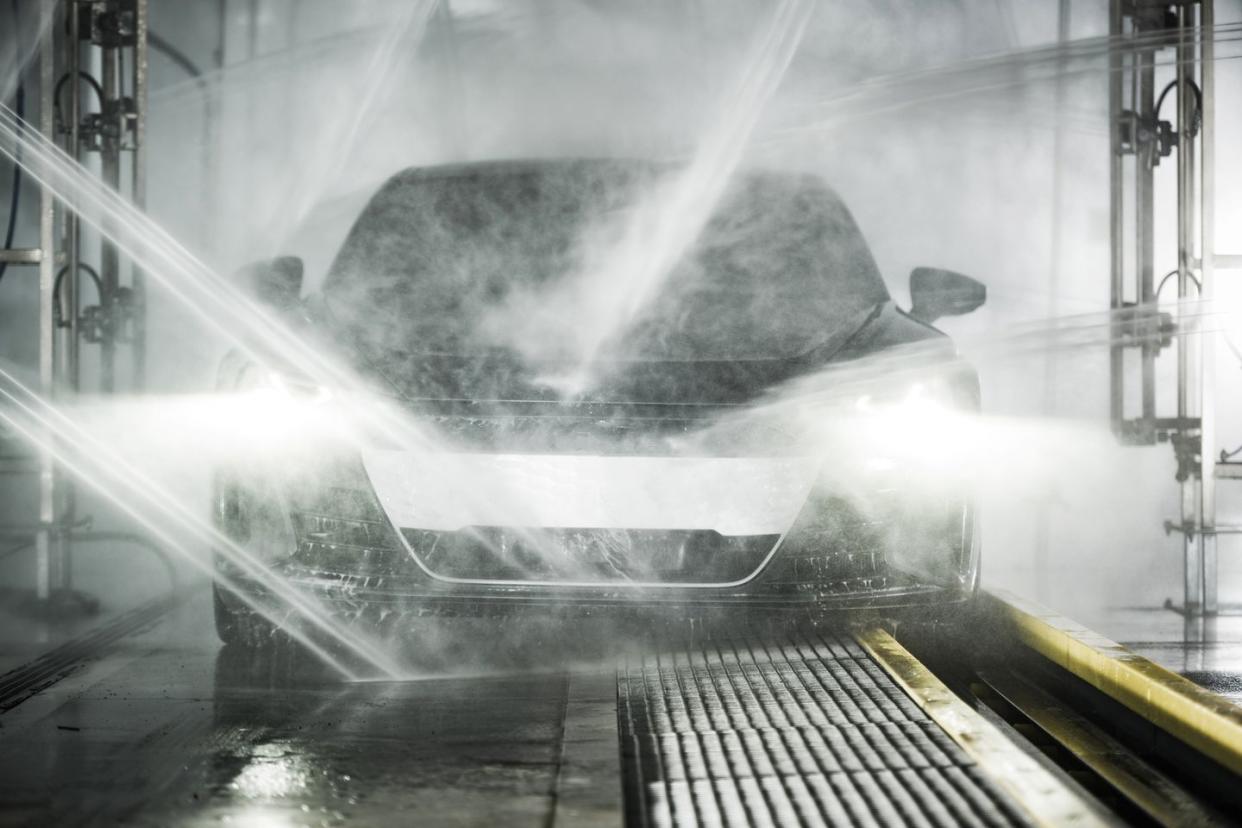
What Happens Inside the Car Wash
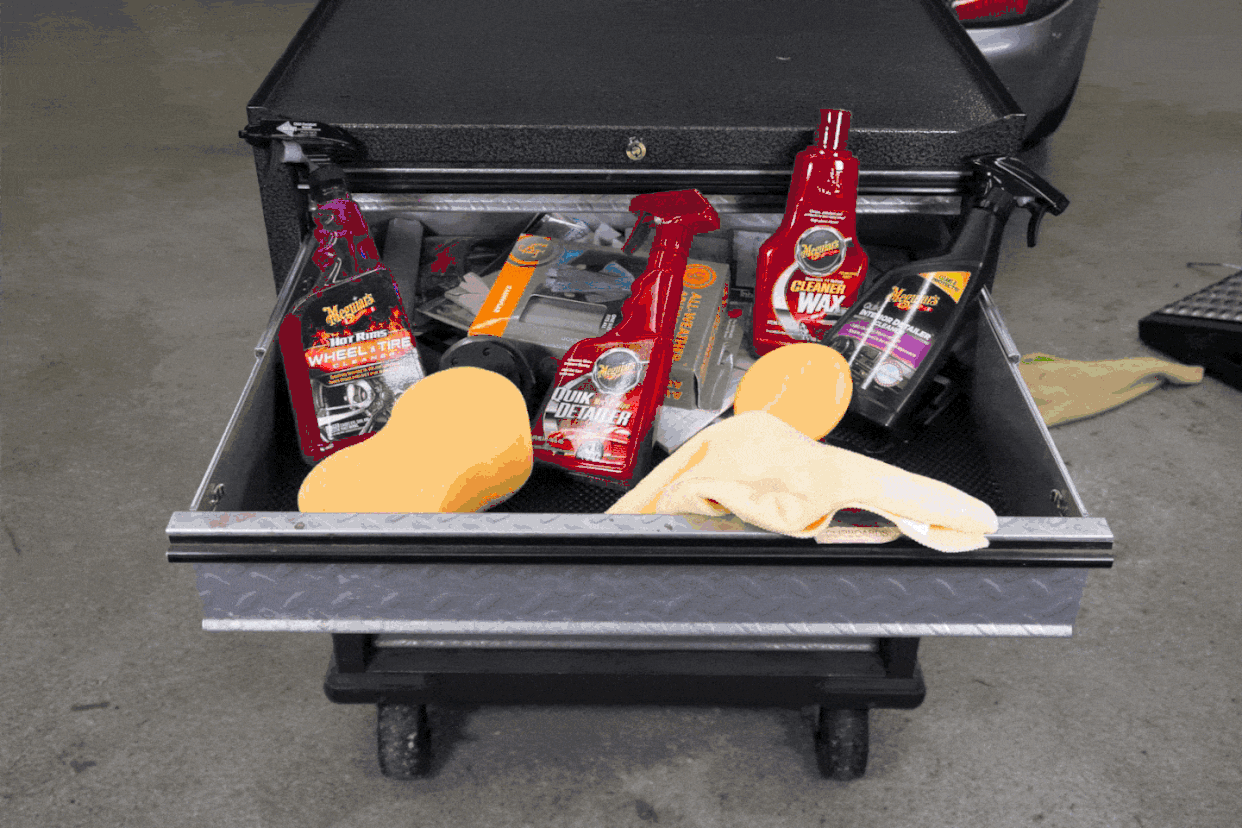
Best Car Cleaning Starter Kits
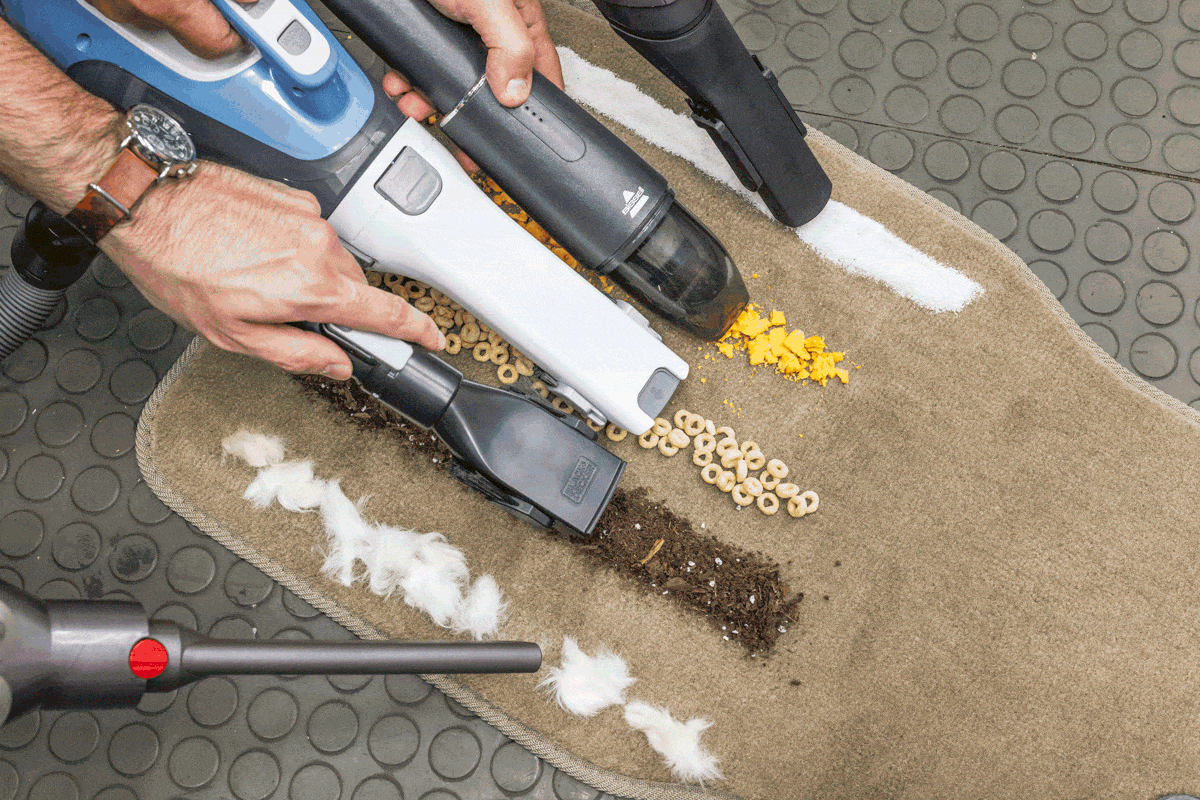
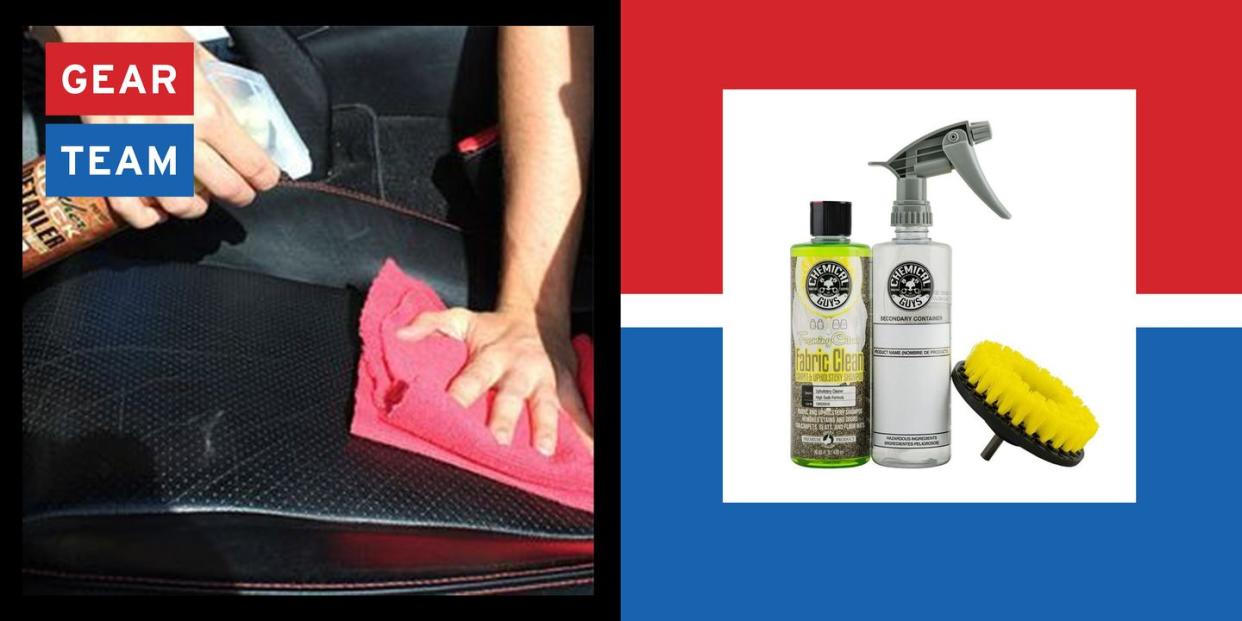
Quick Tips
Unless you're a particularly handy person, servicing a vehicle will likely require outside help. Find a mechanic you trust, even if it's not the dealership you purchased your car from. Save their contact information in a place that's easy to access should you need help with your car.
Understand that the information shared in this story is intended to be basic car care, and depending on the type of vehicle you own and how you plan to use it, you may require more advanced services to keep your car, truck, van, or SUV safely on the road.
Always refer to your vehicle's owner's manual to ensure you're using the proper fluids for each component and adhering to the required maintenance intervals. Deviation from the manufacturer's recommended service schedule can void your car's warranty.
Keep a record of all repairs and maintenance you complete on your vehicle. Not only does this add value to the next owner when you go to sell your car, but it can also provide protection from denied warranty claims if you can prove you followed the suggested maintenance schedule.
You Might Also Like
